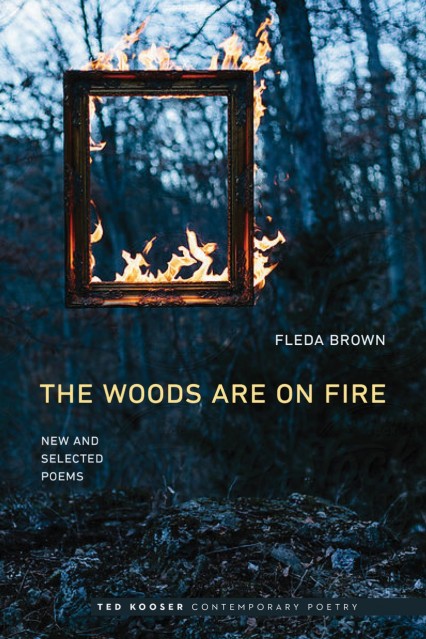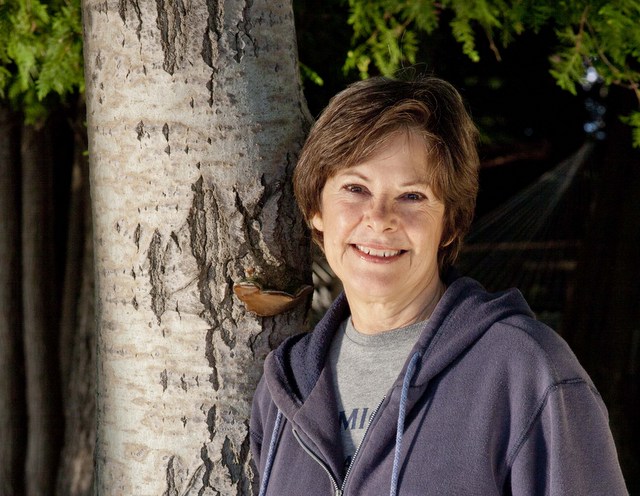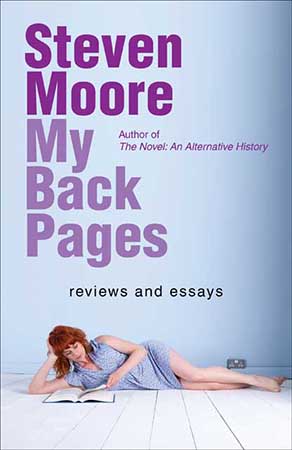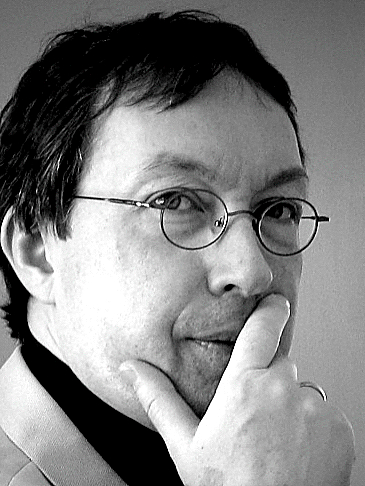
x
I shall find the dark grow luminous, the void fruitful, when I understand that I have nothing; that the ringers in the tower have appointed for the hymen of the soul a passing bell.
—Yeats, Per Amica Silentia Lunae
The Soul. Seek out reality, leave things that seem.
The Heart. What, be a singer born and lack a theme?
The Soul. Isaiah’s coal, what more can man desire?
The Heart. Struck dumb in the simplicity of fire!
The Soul. Look on that fire, salvation walks within.
The Heart. What theme had Homer but original sin?
—Yeats, “Vacillation,” VII
“Her favorite reading as a child was Huxley and Tyndall,” Virginia Woolf tells us of Clarissa Dalloway. As Yeats was fond of saying, “We Irish think otherwise.” He was quoting George Berkeley, reinforcing his favorite philosopher’s resistance to Lockean empiricism with his own defense of visionary powers. In the section of The Trembling of the Veil covering the period 1887-91, Yeats says he was “unlike others of my generation in one thing only.”
I am very religious, and deprived by Huxley and Tyndall, whom I detested, of the simple-minded religion of my childhood, I had made a new religion, almost an infallible Church of poetic tradition, of a fardel of stories, and of personages, and of emotions… passed on from generation to generation by poets and painters with some help from philosophers and theologians.[1]
Though Yeats was never “religious” in the normative sense, he did seek a world, as he says later in this passage, that reflected the “deepest instinct of man,” and would be “steeped in the supernatural.” That was his own instinct. It was his conscious intention, as well, to offset the scientific naturalism of John Tyndall and T. H. Huxley, “Darwin’s bulldog,” and to buttress his rebellion against his skeptical father’s Comptean positivism. In making up his own religion, Yeats relied essentially on art (“poetic tradition,” “poets and painters”), but he included in his “fardel” strands from interrelated traditions Western and Eastern. Seeing them all as a single perennial philosophy, “one history and that the soul’s,” he gathered together elements from Celtic mythology and Irish folklore, British Romanticism (especially Shelley and Blake, whose Los tells us that he “must create a system or be enslaved by another man’s”); Platonism and Neoplatonism; Rosicrucianism and Theosophy, Cabbalism, Hinduism, and Buddhism, along with other varieties of spiritualist and esoteric thought, including Gnosticism. Though Yeats was not a scholar of Gnosticism, neither a Carl Jung nor an Eric Voegelin, let alone a Hans Jonas, there are persistent themes and emphases in his thought and poetry that Gnostics, ancient and modern, would find both familiar and congenial. Others, not so much.
 Yeats by George Charles Beresford, 1911
Yeats by George Charles Beresford, 1911
After this preamble, I will, in discussing the spiritual dimension in Yeats’s work, focus more often than not on Gnostic elements. But this is an essay on Yeats rather than Gnosticism. Having mentioned Gnostics “ancient and modern,” I should make it clear that, for the most part, I bring in historical Gnosticism and the tenets of certain Gnostic sects only where they illuminate particular poems; for example, “A Dialogue of Self and Soul” and “Crazy Jane and Jack the Journeyman.” Otherwise, I will have little to say of the religious movement drawing on, but competing with, Judaism and Christianity in the Eastern Mediterranean in the first and second centuries, CE.[2] Instead, I will emphasize gnosis as differentiated from historical Gnosticism, precisely the distinction made at the 1966 international conference, the Colloquium of Messina, convened to examine the origins of Gnosticism. In the colloquium’s final “Proposal,” the emphasis was on the attainment of gnosis, defined as “knowledge of the divine mysteries reserved for an elite.”
Such knowledge was individual: one’s “intuition” of revealed truth. For most Gnostics, this intuitive esoteric “knowledge” had nothing to do with either Western philosophic reasoning or with the theological knowledge of God to be found in orthodox Judaism or normative Christianity. For spiritual adepts, such intuition derived from knowledge of the divine One. For poets like Yeats, it was identified with that “intuitive Reason” which, for the Romantics—notably, Wordsworth, Coleridge, and their American disciple, Ralph Waldo Emerson—was virtually indistinguishable from the creative Imagination, which, for Yeats, was most powerfully exemplified in the prophetic poetry of Blake and Shelley.
At the same time, there is no denying the centrality of spiritual quest, of esoteric knowledge, of mysticism and “magic,” in Yeats’s life and work. In July 1892, preparing to be initiated into the Second Order of the Golden Dawn, he wrote to one of his heroes, the old Irish nationalist John O’Leary, in response to a “somewhat testy postcard” the kindly old Fenian had sent him. The “probable explanation,” Yeats surmised, was that O’Leary had been listening to the poet’s skeptical father, holding forth on his son’s “magical pursuits out of the immense depths of his ignorance as to everything that I am doing and thinking.” Yeats realizes that the word “magic,” however familiar to his own ears, “has a very outlandish sound to other ears.” But “as to Magic”:
It is surely absurd to hold me ‘weak’…because I chose to persist in a study which I decided deliberately four or five years ago to make, next to my poetry, the most important pursuit of my life….If I had not made magic my constant study I could not have written a single word of my Blake book, nor would The Countess Kathleen have ever come to exist. The mystical life is the centre of all that I do and all that I think and all that I write….I have always considered myself a voice of what I believe to be a greater renaissance—the revolt of the soul against the intellect—now beginning in the world.[3]
Just as he had emphasized art and a “Church of poetic tradition” in the creation of his own “new religion,” even here, in his most strenuous defense of his mystical and magical pursuits, Yeats inserts the caveat that they were paramount, “next to my poetry.” But this is hardly to dismiss the passionate intensity of Yeats’s esoteric and mystical pursuits. What seemed to W. H. Auden, even in his great elegy, “In Memory of W. B. Yeats,” to be “silly” or, worse, to Ezra Pound, to be “very very very bughouse” (it takes one to know one), or by T. S. Eliot to be dreadfully misguided, was taken, not with complete credulity, but very very very seriously, by Yeats himself. His esoteric pursuits, in many heterodox guises, remained an energizing stimulus, if not an obsession, throughout his life. In his elegy for Yeats, written just days after the poet’s death in January 1939, Auden says, “You were silly like us; your gift survived it all.” But it was more than that. What Auden and Eliot and Pound dismissed actually enhanced Yeats’s artistic gift.[4]
§
I just mentioned the Golden Dawn, which makes it time to briefly fill in Yeats’s esoteric resume, some of which will be familiar to many readers. He was, along with his friend George Russell (AE), a founding member, in 1885, of the Dublin Hermetic Society. It quickly evolved, in April 1886, into the Dublin Theosophical Society. Though, as he tells us in an unpublished memoir, he “was much among the Theosophists, having drifted there from the Dublin Hermetic Society,” Yeats declined to join, believing that “Hermetic” better described his own wider interests as a devotee of what he called the study of “magic.” He did join the Theosophical Society of London, in which, eager to push mystical boundaries, he became a member of the “Esoteric Section.” In 1891, he resigned; he was not, as rumor sometimes had it, “expelled,” let alone “excommunicated.”
Yeats was, of course, for more than thirty years a member of the Hermetic Order of the Golden Dawn, which he joined in London in March 1890; he stayed with the Golden Dawn until it splintered, then joined one of its offshoot Orders, the Stella Matutina. During its heyday in the 1890s, the G.D and its Inner Order of the Rose of Ruby and the Cross of Gold (R.R. & A.C.) was “the crowning glory of the occult revival in the nineteenth century,” having succeeded in synthesizing a vast body of disparate material and welding it into an effective “system.”[5] Yeats took as his Golden Dawn motto and pseudonym Demon Est Deus Inversus (D.E.D.I.). That sobriquet’s recognition of the interdependence of opposites is a nod to both William Blake and Helena Petrovna Blavatsky, the 11th chapter of whose seminal text, The Secret Doctrine (1888), bears this title.
 Yeats’s Rose Cross, Order of the Golden Dawn, photo © National Library of Ireland
Yeats’s Rose Cross, Order of the Golden Dawn, photo © National Library of Ireland
The most extraordinary of the many exotic figures that gathered in societies and cults, making Victorian London ground zero in the revolt against reductive materialism, Madame Blavatsky (HPB to her acolytes) was, of course, the co-founder and presiding genius of the Theosophical Society. In a letter to a New England newspaper, Yeats referred to her with wary fascination as “the Pythoness of the Movement.”[6] Unless we accept her own tracing of Theosophy to ancient Tibetan roots, the movement was born in 1875, in part in Blavatsky’s New York City apartment, where she kept a stuffed baboon, sporting under its arm a copy of Darwin’s Origin of Species to represent the creeping tide of scientific materialism she was determined to push back—though it should be mentioned that The Secret Doctrine was an audacious attempt to synthesize science, religion, and philosophy.
While he never shared the requisite belief in the Tibetan Masters who supposedly dictated her theosophical revelations, Yeats, without being anti-Darwinian, did share her determination to resist and turn back that materialist tide. And he was personally fascinated by the Pythoness herself, whom he first met in the considerable flesh (she then weighed well over 200 lbs.) in 1887 when he visited her at a little house in Norwood, a suburb of London. She was just 56 at the time but looked older (she would live only four more years). Young Yeats was kept waiting while she attended to some earlier visitors. Finally admitted, he “found an old woman in a plain loose dark dress: a sort of old Irish peasant, with an air of humor and audacious power.” Their first conversation was a whimsical exchange on the vagaries of her cuckoo clock, which Yeats thought had “hooted” at him. On subsequent visits he found her “almost always full of gaiety…kindly and tolerant,” and accessible—except on those occasions, once a week, when she “answered questions upon her system, and as I look back after thirty tears I often ask myself, ‘Was her speech automatic? Was she a trance medium, or in some similar state, one night in every week?’”[7]
Her alternating states were adumbrated in the phases, active and passive, HPB called, in Isis Unveiled (1877), “the days and nights of Brahma.” Yeats had read that book and Blavatsky’s alternating phases tally with, and may have influenced, his lifelong emphasis on polarity, the antinomies: the tension between quotidian reality and the spiritual or Romantic allure of the Otherworld, in forms ranging from the Celtic Faeryland to that city of art and spirit, Byzantium; and, early and late, between things that merely “seem” (Platonic “appearance,” Hindu maya) and the spiritual reality perceived by Western visionaries and Hindu hermits contemplating on Asian mountains. After reading Isis Unveiled, Yeats had delved into a book given him by AE. This was Esoteric Buddhism (1883) by Madame Blavatsky’s fellow Theosophist and sometime disciple, A. P. Sinnett, whose earlier book, The Occult World (1881), had already had an impact on Yeats. “Spirituality, in the occult sense,” Sinnett declared, “has nothing to do with feeling devout: it has to do with the capacity of the mind for assimilating knowledge at the fountainhead of knowledge itself.” And he asserted another antithesis crucial to Yeats: that to become an “adept,” a rare status “beyond the reach of the general public,” one must “obey the inward impulse of [one’s] soul, irrespective of the prudential considerations of worldly science or sagacity” (101). That Eastern impulse is evident in Yeats’s three “hermit” poems in Responsibilities (1914).
A quarter century earlier, three poems in Crossways, his first collection of lyrics— “The Indian upon God,” “The Indian to his Love,” and the lengthy (91-line) “Anashuya and Vijaya”[8]—were written under a more direct and visceral influence. For the lure of the East had another source, also related to Madame Blavatsky. Yeats had been deeply impressed with the roving ambassador of Theosophy she had sent to Dublin in April 1886, to instruct the members of the Dublin Hermetic Society in the nuances of Theosophy. The envoy was the charismatic young Bengali Swami, Mohini Chatterjee, described by Madame Blavatsky, with perhaps more gaiety than tolerance, as “a nutmeg Hindoo with buck eyes,” for whom several of his English disciples “burned with a scandalous, ferocious passion,” that “craving of old gourmands for unnatural food.”[9] Despite his inability to resist the sexual temptations presented to him (he was eventually dispatched back to India), Chatterjee preached the need to realize one’s individual soul by contemplation, penetrating the illusory nature of the material world, and abjuring worldly ambition. His book, published several months later, described reincarnational stages, and ascending states of consciousness. The fourth and final state, which “may be called transcendental consciousness,” is ineffable, though “glimpses” of it “may be obtained in the abnormal condition of extasis.”[10]
 Madame Blavatsky, photo taken between 1886 and 1888
Madame Blavatsky, photo taken between 1886 and 1888
Yeats later said that he learned more from Chattterjee than “from any book.” Hyperbole; but there is no doubt that he was permanently affected by the concept of ancient and secret wisdom being passed on orally from generation to generation, fragmentary glimpses of an ineffable truth. There are distinctions between East and West, but, as in Gnosticism and Neoplatonism, the Theosophy of Madame Blavatsky and Mohini Chatterjee presents an unknown Absolute, from which souls emanate as fragments, or “sparks,” separated from the divine substance, and longing to return to the One from which they came. The principal Eastern variation is that, to achieve that ultimate goal, they have to “make a long pilgrimage through many incarnations, live through many lives, both in this world and the next.”[11]
Many years later, in 1929, Yeats wrote an eponymous poem, “Mohini Chatterjee.” Its final words, “Men dance on deathless feet,” were added (though attributed to various “great sages”), by Yeats himself “in commentary” on Chatterjee’s own “words” on reincarnation. There is no reference to a personal God, and we are to “pray for nothing,” but just repeat every night in bed, that one has been a king, a slave, a fool, a rascal, knave. “Nor is there anything/ …That I have not been./ And yet upon my breast/ A myriad heads have lain.” Such words were spoken by Mohini Chatterjee to “set at rest/ A boy’s turbulent days.” When that boy, almost forty years later, published “Mohini Chatterjee” in The Winding Stair and Other Poems (1933), he placed it immediately preceding what is certainly his most “turbulent” poem of spiritual purgation and reincarnation: “Byzantium,” in which impure spirits, “complexities of mire and blood,” are presented “dying into a dance,/ An agony of trance,/ An agony of flame that cannot singe a sleeve.” Yet, like most of the other poems we will examine, “Byzantium” participates, though in this case with unique fury and surging energy, in the dominant Yeatsian agon between Time and Eternity, flesh and spirit.
§
As we’ve seen, Yeats wondered if, on heightened occasions, HPB’s speech might not be “automatic,” and herself a “trance medium.” But, since he never gave full credence to the “astral” dictations of Blavatsky’s Tibetan Masters, it is ironic that his own major esoteric text had a related genesis. His book A Vision, first published in 1925 and revised in 1937, is based on the “automatic writing” for which Mrs. Yeats discovered a gift when, in the early days of their marriage in 1917, she sensed that her husband’s thoughts were drifting back to the love of his life and his Muse, the unattainable Maud Gonne, and to her lush daughter, Iseult, to whom Yeats had also proposed before marrying his wife. Whatever their origin, psychological or occult, the wisdom conveyed to George by her “Communicators,” and then passed on to her husband, preoccupied the poet for years. Alternately insightful and idiosyncratic, beautiful and a bit bananas, A Vision may not be required reading for lovers of the poetry, even for serious students. As one Yeatsian wittily put it, speaking for many, “a little seems too much, his business none of ours.”[12]
But Yeats’s purpose was serious, and, as always, a balancing attempt to exercise individual creative freedom within a rich tradition. In dedicating the first edition of A Vision to “Vestigia” (Moina Mathers, sister of MacGregor Mathers, head of the Order of the Golden Dawn), Yeats noted that while some in the Order were “looking for spiritual happiness or for some form of unknown power,” clearly Hermetic or historically Gnostic goals, he had a more practical and poetry-centered object, though that, too, reflects the intuitive Gnosticism of poets and other creative artists seeking their own personal visions. Even back then, in the 1890s, he claims, he anticipated what would finally emerge as A Vision, with its circuits of sun and moon and its double-gyre, its tension between Fate and Freedom: “I wished for a system of thought that would leave my imagination free to create as it chose and yet make all that it created, or could create, part of one history and that the soul’s” (A Vision [1925], xi). A few years earlier, T. S. Eliot, though he had no more patience than did W.H. Auden with Yeats’s esoteric pursuits, had memorably described creative freedom operating within a larger and necessary historical discipline as the interaction between “Tradition and the Individual Talent.”
If it is not mandatory that those drawn to the poetry read A Vision, it was absolutely necessary that Yeats write it. It illuminates the later poetry, and even provides the skeletal structure for some of his greatest poems, the single best known of which, “The Second Coming,” was originally accompanied by a long note, reproducing the double-gyre, that central symbol of A Vision. Yeats tells us, in the “Introduction” to the second edition of A Vision, that, back in 1917, he struggled for several days to decipher the “almost illegible script,” which he nevertheless found “so exciting, sometimes so profound,” that he not only persuaded his wife to persevere, but offered to give up poetry to devote what remained of his own life to “explaining and piecing together those scattered sentences” which he believed contained mysterious wisdom. The response from one of the unknown writers was welcome news for him and for us: “‘No,’ was the answer, ‘we have come to give you metaphors for poetry’.” [13]
 Yeats’s Gyre
Yeats’s Gyre
Yeats was a man at once credulous and skeptical. His lifelong quest for esoteric knowledge was countered by the circumspection of an intelligent, self-divided man and a notably dialectical poet. But he had no doubt that there was a spiritual realm. He strove to acquire knowledge of that world through any and all means at hand: studying the “perennial philosophy,” but not excluding the occasional resort to hashish and mescal to induce occult visions, and belief in astrology and séances, of which he attended many. A séance is at the center of one of his most dramatic plays, Words upon the Window-pane (1932), which helps explain the emphasis on “a medium’s mouth” in his cryptic poem “Fragments,” written at the same time, and which I will later discuss at some length.
Though it is difficult to track and disentangle intertwined strands of thought and influence, let alone make conclusive pronouncements, two significant Yeats scholars, Allan Grossman (in his 1969 study of The Wind Among the Reeds, titled Poetic Knowledge in Early Yeats) and that titan, Harold Bloom, in his sweeping 1970 study, grandly titled Yeats, both concluded that their man was essentially a Gnostic. The same assertion governs an impressive though unpublished 1992 Ph.D thesis, written by Steven J. Kelley and titled Yeats, Bloom, and the Dialectics of Theory, Criticism and Poetry. My own conclusion is close, but less certain.
§
There is no question that Yeats was a lifelong Seeker and that the “knowledge” he was seeking, whether poetic or Hermetic, was compatible, often in close alignment, with the quest for gnosis: that internal, intuitive knowledge of spiritual truth believed by Gnostics, ancient and modern, to provide the one path to deliverance from the constraints of material existence, and thus to be essential to salvation. On the other hand, he wanted, as he told “Vestigia,” to participate in a spiritual tradition that “would leave my imagination free to create as it chose.” The power and passionate intensity of much of his best poetry derives from Yeats’s commitment to the paradox that the “sacred,” unquestionably valid, was to be found through the “profane,” and in the here and now.
A profound point was made three-quarters of a century ago by a perceptive student of Yeats’s life and work, Peter Allt, later the editor of the indispensable “Variorum Edition” of the poems. Allt argued persuasively that Yeats’s “mature religious Anschauung” consists of “religious belief without any religious faith, notional assent to the reality of the supernatural” combined with “an emotional dissent from its actuality.”[14] In Gnostic terms (which are not Allt’s), Yeats, as a student of secret wisdom, responded, not to the orthodox Christian emphasis on pistis (God’s gift of faith), but to gnosis: the esoteric knowledge derived from individual intuition of divine revelation, often, as in that most formidable of Gnostics, Valentinus, in the guise of myth garmented as philosophy.[15] What Allt refers to as “emotional dissent” illuminates Yeats’s resistance to Christianity, and his occasional need to “mock Plotinus’ thought/ And cry in Plato’s teeth,” as he does in the final section of “The Tower” in the very act of preparing his “peace” and making his “soul.” But emotional dissent and the making of one’s own soul in an act of self-redemption are hardly alien to the concept of individual gnosis.
Paramount to understanding Yeats as man and poet is recognizing the tension between the two worlds, between what he called the primary and the antithetical, the never fully resolved debate between the Soul and the Self (or Heart). As we will see, that tension plays out from his earliest poems to the masterpieces of his maturity. The theme begins with his first published major work, The Wanderings of Oisin (1889), a lengthy quest-poem centering on the debate between paganism and Christianity, between the Celtic warrior Oisin and St. Patrick. The theme continues with his pivotal Rosicrucian poem, “To the Rose upon the Rood of Time” (1893), and culminates in the great debate-poems of his maturity: “A Dialogue of Self and Soul” (1927) and the condensed, career-synopsizing debate between “The Soul” and “The Heart” in section VII of the poetic sequence revealingly titled “Vacillation,” which appeared forty years after “To the Rose upon the Rood of Time.”
The final section of “Vacillation” ends with the poet blessing, yet—gently and gaily, if somewhat patronizingly—rejecting the Saint, here represented by the Catholic theologian Baron von Hügel, who had, in his book The Mystical Element of Religion, stressed “the costingness of regeneration.” In the last and best of his Four Quartets, T. S. Eliot aligns himself with von Hügel by endorsing, in the conclusion of “Little Gidding” (lines 293-94), “A condition of complete simplicity/ (Costing not less than everything).” In section 2, in the Dantesque ghost-encounter (seventy of the finest lines he ever wrote and, by his own admission, the ones that had “cost him the most effort”), Eliot respectfully but definitively differentiated himself from the recently deceased Yeats. In that nocturnal encounter with a largely Yeatsian “compound familiar ghost,” Eliot echoes in order to alter Yeats’s poem “Vacillation,” and the refusal of “The Heart” to be “struck dumb in the simplicity of fire!”[16] In the context of the theme of this essay, the contrast between Eliot and Yeats is illuminating; and Eliot is right to perceive as his mighty opposite in spiritual terms, W. B. Yeats, whom he pronounced in his 1940 memorial address, the greatest poet of the century, “certainly in English and, and, as far as I can tell, in any language,” but who was also, from Eliot’s Christian perspective, an occultist and a pagan.
The charges were hardly far-fetched. The final section of “Vacillation” begins with the poet wondering if he really must “part” with von Hügel, since both “Accept the miracles of the saints and honor sanctity.” And yet he must, for although his heart “might find relief/ Did I become a Christian man and choose for my belief/ What seems most welcome in the tomb,” he must
xxxxxxxxxxxxxxxxxxxxxplay a predestined part.
Homer is my example and his unchristened heart.
The lion and the honeycomb, what has Scripture said?
So get you gone, von Hugel, though with blessings on your head.
In sending the poem to Olivia Shakespear, his first lover and later most intimate lifetime correspondent, Yeats, having just re-read all his lyric poetry, cited that line, and observed: “The swordsman throughout repudiates the saint, but not without vacillation. Is that perhaps the sole theme—Usheen and Patrick—“so get you gone Von Hugel though with blessings on your head’?” (Letters, 790)
§
In referring throughout to Yeats as a Seeker, I am alluding to a very early, little-known “dramatic poem in two scenes” with that title. Though Yeats later struck The Seeker from his canon, its theme—the perennial quest for secret knowledge, usually celebrated but always with an acute awareness of the attendant dangers of estrangement from “mere” human life—initiates what might be fairly described as the basic and archetypal pattern of his life and work.[17] The “Seeker” of the title is an aged knight who sacrifices the normal comforts of life and shirks social responsibilities in order to follow a mysterious, beckoning voice. In his dying moments, he discovers that the alluring voice he has been pursuing all his life is that of a bearded hag, whose name is “Infamy.” That final turn looks back to Celtic mythology and to Book I, Canto ii of Spenser’s Faery Queen, where the evil witch Duessa, outwardly “faire,” is actually “fowle.” It also anticipates Rebecca du Maurier’s short story, “Don’t Look Now” (later turned by director Nicholas Roeg into a haunting film starring Donald Sutherland and Julie Christie). Of course, Celtic mythology also has instances of reversal. In the most famous modern version (Yeats’s 1902 play Cathleen ni Houlihan, written for and starring the poet’s beloved Maud Gonne), the old hag is climactically transformed into a beautiful woman: “a young girl with the walk of a queen,” who is Ireland herself, rejuvenated by blood-sacrifice.
 Maud Gonne in Cathleen Ni Houlihan
Maud Gonne in Cathleen Ni Houlihan
As in that seminal precursor poem for Yeats, Shelley’s Alastor, this theme, with its tension between the material and spiritual worlds, is at once Gnostic and High Romantic. As such, the Seeker-theme illuminates, along with several of Yeats’s most beautiful early quest-lyrics, two quintessential, explicitly Rosicrucian, poems: “To the Rose upon the Rood of Time” and, a poem I will get to in due course, “The Secret Rose.”
“To the Rose upon the Rood of Time,” the italicized poem opening the 1893 volume The Rose, establishes, far more powerfully than The Seeker, this poet’ s lifelong pattern of dialectical vacillation, of being “pulled” between the temporal and spiritual worlds. In his 1907 essay “Poetry and Tradition,” Yeats would fuse Romanticism (Blake’s dialectical “Contraries” without which there can be “no progression”) with Rosicrucianism: “The nobleness of the Arts,” Yeats writes, “is in the mingling of contraries, the extremity of sorrow, the extremity of joy, perfection of personality, the perfection of its surrender; and the red rose opens at the meeting of the two beams of the cross, and at the trysting place of mortal and immortal, time and eternity.”[18]
In “To the Rose upon the Rood of Time,” the symbolist poet seeks to “find” the immortal within the mortal; yet there is an inevitable tension between “all poor foolish things that live a day” and “Eternal Beauty wandering on her way.” That mingling, or contrast, concludes the first of the poem’s two 12-line movements. The second part begins by invoking the Rose to “Come near, come near, come near…,” only to have the poet suddenly recoil from total absorption in the eternal symbol. He may be recalling Keats, who, at the turning point of the “Ode to a Nightingale,” suddenly realizes that if he were to emulate the nightingale’s “pouring forth thy soul abroad/ In such an ecstasy,” by dying, he would, far from entering into unity with the “immortal Bird,” be divorced from it, and everything else, forever: “Still wouldst thou sing, and I have ears in vain—/ To thy high requiem become a sod.”
Yeats’s recoil in “To the Rose upon the Rood of Time” is no less abrupt, and thematically identical: “Come near, come near, come near—Ah, leave me still/ A little space for the rose- breath to fill!” This sudden recoil, marked by a rare exclamation-point, is a frightened defense against the very Beauty he remains in quest of—like his precursor, the Shelley of the “Hymn to Intellectual Beauty.” But Yeats hesitates, afraid that he will be totally absorbed, engulfed, in the spiritual realm symbolized by the Rose. Along with Keats at the turning-point of the “Ode to a Nightingale,” another parallel may be illuminating.
The Latin Epigraph to The Rose—Sero te amavi, Pulchritudo tam antiqua et tam nova! Sero te amavi—is from The Confessions (“Too late I have loved you, Beauty so old and so new! Too late I have loved you”), a passage (X, 27) in which St. Augustine, addressing God, longs to be kindled with a desire that God approach him. Yeats would later, in 1901, quote these same Latin lines to illustrate that the religious life and the life of the artist share a common goal.[19] But the plea for “a little space” in “To the Rose upon the Rood of Time” may remind us of a more famous remark by Augustine, also addressed to God, but having to do with profane rather than sacred love. A sinful man, still smitten with his mistress, he would, Augustine tells us, pray: “‘O Lord, give me chastity and continency, but not yet!’ For I was afraid, lest you should hear me soon, and soon deliver me from the disease of concupiscence, which I desired to have satisfied rather than extinguished” (Confessions XIII, 7:7).
 Title page of Summum Bonum by Rosicrucian apologist Robert Fludd, 1629
Title page of Summum Bonum by Rosicrucian apologist Robert Fludd, 1629
In pleading with his Rose-Muse to “come near,” yet “leave me still/ A little space for the rose-breath to fill,” Yeats also fears a too precipitous deliverance from the temporal world. Augustine is “afraid, lest you [God] should hear me too soon.” Yeats is afraid “Lest I no more hear common things that crave.” Becoming deaf to the transient world with its “heavy mortal hopes that toil and pass,” he worries that he will “seek alone to hear the strange things said/ By God to…those long dead,” and thus “learn to chaunt a tongue men do not know.” The hidden wisdom and eternal beauty symbolized by the Rose is much to be desired. But this quester is also a poet; and “a poet,” as Wordsworth rightly said in the Preface to Lyrical Ballads, is above all, “a man speaking to other men.” The “rose-breath” is the crucial “space” between the two worlds. Here, as elsewhere, self-divided Yeats is pulled in two antithetical directions. Hence the debates, implicit and often explicit, that shape so many of his poems.
§
A memorable paragraph in his most beautiful prose work begins, “We make out of the quarrel with others, rhetoric, but out of the quarrel with ourselves, poetry.”[20] Almost forty years after he wrote “To the Rose upon the Rood of Time,” Yeats presented, in section VII of his poetic sequence “Vacillation,” a debate between “The Soul” and “The Heart.” Once again, and more dramatically, the more Yeatsian of the interlocutors resists the option of chanting in “a tongue men do not know.” The Soul offers “Isaiah’s coal,” adding, in an imperious rhetorical question, “what more can man desire?” But the Heart, “a singer born,” refuses to be “struck dumb in the simplicity of fire,” his tongue purified but cauterized by the spiritual fire of that live coal the rather Promethean angel took from God’s altar and brought to the prophet’s lips in Isaiah 6:6-7. Having just refused to “seek out” spiritual “reality,” the “Heart” goes on, after indignantly rejecting Isaiah’s coal and “the simplicity of fire,” to adamantly spurn Soul’s final promise and threat: “Look on that fire, salvation walks within.” The Heart anachronistically but dramatically responds, “What theme had Homer but original sin?” Though it firmly stands its antithetical ground, the Heart does not deny the lot-darkening concept of original sin, and accepts the notional distinction (Platonic, Neoplatonic, Christian) between spiritual “reality” and material “things that [merely] seem.” But since it is these resinous things of the world that fuel an artist’s fire and provide a “theme,” the Heart emotionally dissents. The tension between contraries, and the titular “vacillation,” persist, as does the desire to merge the antinomies at some “trysting place,” Yeats’s language characteristically “mingling” the spiritual and the erotic.
Before turning to “The Secret Rose,” which appeared in Yeats’s next volume, two other poems from The Rose merit comment: “Who Goes with Fergus?” and, immediately following, “The Man who Dreamed of Faeryland.” Both are beautiful, and both embody the tension between the two worlds. The first suggests that the peace promised by an alluring Otherworld is more tumultuous than it appears; the second, like The Seeker and “The Stolen Child,” emphasizes the human cost of seduction by Otherworldly dreams. I intend to return to “The Man who Dreamed of Faeryland” later in this essay, juxtaposing it with “What Then?,” a poem written almost a half-century later, and which, I believe, amounts to a point-by-point refutation of the earlier poem—except, crucially, for the refrain.
“The Man who Dreamed of Faeryland” is a catalog of might-have-beens. The “tenderness” of love; the “prudent years” that might have freed him from “money cares and fears”; the maintenance of “a fine angry mood” leading to “vengeance” upon mockers; and, finally, “unhaunted sleep” in the grave: all have been lost, spoiled by the repeated “singing” of “an unnecessary cruel voice” that “shook the man out of his new ease,” paralyzing him so that he dies without ever having lived.[21] The voice—a variation on the siren call of the faeries in “The Stolen Child” (“Come away, O human child!”) and on the “voice” that beckons and deceives the victim of The Seeker—emanates, of course, from the Otherworld, in this case from a Celtic “woven world-forgotten isle,” where
There dwelt a gay, exulting, gentle race
Under the golden or the silver skies;
That if a dancer stayed his hungry foot
It seemed the sun and moon were in the fruit;
And at that singing he was no more wise.
The poem ends, “The man has found no comfort in the grave.” But that closing line is immediately preceded by a rather cryptic couplet: “Why should those lovers that no lovers miss/ Dream, until God burn Nature with a kiss?” Presumably, in Faeryland, where the boughs are “changeless” and the waves “dreamless,” all dreams are fulfilled, as are the desires of those perfect lovers, who are together, and therefore do not “miss” one another.[22] Thus, there is no need for further dreaming, “until” (always a pivotal word in poems, and notably in Yeats’s poems) “God burn Nature with a kiss.” Yeats’s early poetry has its apocalypses, among the most dramatic the windblown Blakean conflagration in “The Secret Rose.” But the apocalypse in the Faeryland poem is unexpected, unless one has come across Yeats’s story “The Untiring Ones,” where the faeries dance for many centuries “until God shall burn up the world with a kiss.”[23]
We also have a supposedly perfect world, with the “deep wood’s woven shade” and lovers who “dance upon the level shore,” in “Who Goes with Fergus?” Originally a song in the earliest version (1892) of Yeats’s play The Countess Kathleen, it was a favorite among the early Yeats poems memorized by James Joyce—the song he sang in lieu of the requested prayer at his mother’s deathbed and whose words haunt his alter ego, Stephen Dedalus, throughout Bloomsday. Fergus, the king of Ulster who put aside his crown to live in peace and “pierce the deep wood’s woven shade,” invites a young man and maid to join him in his forest paradise, where, he promises, they will “brood on hopes and fear no more”;
And no more turn aside and brood
Upon love’s bitter mystery;
For Fergus rules the brazen cars,
And rules the shadows of the wood,
And the white breast of the dim sea
And all disheveled wandering stars.
That enchanting final line has sexual precursors; it fuses the “golden tresses” Eve “wore/ Disheveled” and in “wanton ringlets” (Paradise Lost 4:305-6) with Pope’s echo in The Rape of the Lock, which ends with Belinda’s shorn tresses consecrated “midst the Stars”: “Not Berenices’s Locks first rose so bright,/ The Heavens bespangling with disheveled Light.” Those sexual undercurrents are present in all three of the concluding lines. Despite the emotional respite promised by Fergus, the poem’s climactic imagery—“shadows of the wood,” the “white breast of the dim sea,” the “disheveled wandering stars”—embracing earth, sea, and the heavens—extends to this supposedly peaceful paradise all the erotic tumult of “love’s bitter mystery.”
§
The quest-theme first established crudely in The Seeker, beautifully in “The Stolen Child,” “The Man who Dreamed of Faeryland,” and “Who Goes with Fergus?,” and, perhaps most seminally in “The Rose upon the Rood of Time,” also provides the thematic structure for the two Byzantium poems, featuring, first, a sailing after knowledge and, second, a process of purgation, both of which turn out to be simultaneously spiritual and erotic. Looking ahead several decades, therefore, I’m compelled to note that something similar happens in both Byzantium poems, whose subject is the opposition of flesh and spirit, life and death, natural flux and spiritual form, but whose shared theme is that these antitheses are polarities—Blakean Contraries ultimately and inextricably interdependent. The Byzantium poems seem proof of the artistic truth of Yeats’s Golden Dawn name, Demon Est Deus Inversus, and of Blake’s proverb, “Eternity is in love with the productions of time.” That proverb is from The Marriage of Heaven and Hell, Blake’s affirmation of the polar nature of being, privileging, in the dialectic of necessary Contraries, “Energy” and the active “Prolific” over the “Devouring,” the passive and religious.
In “Sailing to Byzantium,” a sixty-year-old and temporarily impotent poet, painfully aware that the world of youth and sexual vitality is “no country for old men,” sets sail for and has finally “come/ To the holy city of Byzantium.” Everything, yet nothing, has changed. The opening stanza’s “young/ In one another’s arms, birds in the trees,/—Those dying generations at their song—” are reversed yet mirrored in the final stanza. “Once out of nature,” the aging speaker, his heart “sick with desire/ And fastened to a dying animal,” imagines that heart consumed away and himself (with what Denis Donoghue once wittily characterized as “the desperate certainty of a recent convert”) transformed into a bird of “hammered gold and gold enameling,” set “upon a golden bough to sing/ To lords and ladies of Byzantium/ Of what is past, or passing, or to come.”
 Yeats later in life
Yeats later in life
In a 1937 BBC broadcast, Yeats glossed the golden bird and Virgilian golden bough as symbolic “of the intellectual joy of eternity, as contrasted to the instinctual joy of human life.” But these golden artifacts are still, however changed, recognizable “birds in the trees,” so that, whatever the ostensible thrust of the poem, the undertow of the imagery recreates—as in the “white breast” and “disheveled” stars of the supposedly tumult-free final stanza of “Who Goes with Fergus?”—the very world that has been rejected. Further, the now-avian poet is singing to “lords and ladies” of Byzantium, the sexual principle surviving even in that “holy city”; and his theme, “What is past, or passing, or to come,” repeats—in a Keatsian “finer tone,” to be sure—the three-stage cycle of generation presented in the opening stanza: “Whatever is begotten, born, and dies.” “Caught in that sensual music,” those “dying generations….neglect/ Monuments of unageing intellect.” But that golden bird set on the golden bough, however symbolic of unageing intellect, seems still partially caught in that sensual music, singing of the cycle of time to lords and ladies. Nature is the source of art, which, in turn, expresses nature; and the audience will always necessarily be men and women.
I’ve already referred to “Byzantium”—borrowing the adjective from “Mohini Chatterjee,” the poem that immediately precedes it—as Yeats’s most “turbulent” engagement in the tension, marked by conflict and continuity, between flesh and spirit, natural and supernatural, Time and Eternity. Though he admired the first Byzantium poem, Yeats’s friend Sturge Moore expressed a serious reservation: “Your Sailing to Byzantium, magnificent as the first three stanzas are, lets me down in the fourth, as such a goldsmith’s bird is as much nature as a man’s body, especially if it only sings like Homer and Shakespeare of what is past or passing or to come to Lords and Ladies.” It’s difficult to believe that this was news to Yeats; but, agreeing with Moore to the extent that his friend had shown him that “the idea needed exposition,” he set out to address the issue in a second poem.[24]
The result was “Byzantium,” a poem that complicates rather than resolves Sturge Moore’s intelligent if limited quibble. Holy and purgatorial though the city may be, we are told, as the “unpurged images of day recede,” that the Emperor’s soldiery are “drunken” and “abed,” perhaps exhausted from visiting temple prostitutes, since we hear, as night’s resonance recedes, “night-walker’s song/ After great cathedral gong.” Amid considerable occult spookiness, including a walking mummy, more image than shade or man, two images of the Eternal emerge, the works of architect and goldsmith; both transcending and scorning the human cycle, sublunary and changeable:
A starlit or a moonlit dome disdains
All that man is,
All mere complexities,
The fury and the mire of human veins.
The second emblem of eternity reprises the first poem’s icon of “hammered gold and gold enameling,” the form the speaker of “Sailing to Byzantium” imagined himself taking once he was “out of nature.” This avian artifact,
Miracle, bird, or golden handiwork,
More miracle than bird or handiwork,
Can, like the cocks of Hades crow,
Or, by the moon embittered, scorn aloud
In glory of changeless metal
Common bird or petal
And all complexities of mire and blood.
However golden and immutable it may be, that the miraculous bird can be moon-embittered and scornful suggests that it may be “almost as much nature” as the golden bird Moore found insufficiently transcendent in the first Byzantium poem. Even in the overtly primary or soul-directed Byzantium poems, the antithetical or life-directed impulse is too passionate to be programmatically subdued. We remember (as with the Byzantium poems’ precursors, Keats’s Nightingale and Grecian Urn odes) the rich vitality of the sexual world being “rejected” in the first poem, and the ambiguity of the famous phrase, “the artifice of eternity.” And the final tumultuous stanza of “Byzantium,” especially its astonishing last line, evokes a power almost, but not quite, beyond critical analysis:
The multitude of souls (“Spirit after spirit!”) riding into the holy city, each “Astraddle on the dolphin’s mire and blood,” cannot be controlled, even though that surging power is said to be broken by the Byzantine artificers and artifacts. The poem ends with a single extraordinary burst, asserting one thing thematically, but, in its sheer momentum and syntax, suggesting quite another:
xxxxxxxThe smithies break the flood,
The golden smithies of the Emperor!
Marbles of the dancing floor
Break bitter furies of complexity,
Those images that yet
Fresh images beget,
That dolphin-torn, that gong-tormented sea.
The marbled floor is not only the site for the preceding stanza’s ritual of purgation, where the spirits are envisioned “dying into a dance”; the floor itself seems to be “dancing,” the city almost lifted off its dykes under the inundation of the prolific sea of generation. The Emperor’s smithies and marbles, we are twice told, “break” (defend against, order, tame) these “furies,” “images,” and the sea itself. All three are the direct objects of that one verb; but, as Helen Vendler has brilliantly observed, “Practically speaking, the governing force of the verb ‘break’ is spent long before the end of the sentence is reached.”[25] The artistic defenses erected to order and transform the flood end up emphasizing instead the turbulent plenitude of nature, and those spawning “images that yet/ Fresh images beget.”
We are left—in one of the most remarkable single lines in all of English literature—with “That dolphin-torn, that gong-tormented sea.” Along with the images that yet fresh images “beget,” that final line recalls but overpowers the teeming fish and flesh—all that is “begotten, born, and dies,” the “salmon-falls, the mackerel-crowded seas”—of “Sailing to Byzantium.” The dolphin is at once the mythological savior and transporter of souls to paradise and kin to us, who share its complexities of “mire and blood.” Inversely, the “gong,” though emblematic of Time, also, since it recalls the semantron of the opening stanza, the “great cathedral gong,” has to be seen and heard as tormenting the surface of life, yet pulling the sea of generation up, to the spiritual source of life’s transcendence. Once again, though more powerfully than usual, we are caught up in the dialectical conflict between Time and Eternity, sexuality and spirituality, Self and Soul.
§
We will shortly be returning, at long last, to the second of the Rosicrucian poems earlier mentioned. “The Secret Rose” (1896), the last of his explicit Rose poems, appeared in Yeats’s next collection, the autumnal The Wind Among the Reeds (1899). This fin-de-siècle and symboliste volume (his friend Arthur Symons’s influential The Symbolist Movement in Poetry appeared the same year), evokes a fallen world, soon to be visited by a longed-for apocalyptic wind. This volume includes what may be Yeats’s most beautiful early poem, the exquisite “Song of Wandering Aengus,” which projects ultimate union between the temporal and eternal as a “trysting place,” sexual and, in its mingling—as in that dreamt-of “Faeryland,” where “the sun and moon were in fruit”— of lunar apples of silver and solar apples of gold: a marriage of alchemy and Deuteronomy. The long-sought immortal, transformed from fish to a woman of the Sidhe, and Aengus, a notably human god, will meet in Eternity, an earthly Paradise where he will
xxxxxxkiss her lips and take her hands;
And walk among long dappled grass,
And pluck till time and times are done
The silver apples of the moon,
The golden apples of the sun.
Less entrancing poems in The Wind Among the Reeds feature a world-weary speaker who, to quote the longest-titled poem in a volume of many long titles, “mourns for the Change that has come upon him and his Beloved, and longs for the End of the World.” That consummation devoutly to be wished is far more dramatic in “The Secret Rose.” The poem begins and ends, “Far-off, most secret, and inviolate Rose”: a rondure suggesting that all is now enfolded (the verb “enfold” appears twice in the poem) within the petals of the symbolic flower. The speaker, and Seeker is among those questers who “have sought thee in the Holy Sepulchre,/ Or in the wine-vat,” a questing alternately Christian or Dionysian. Wandering Aengus sought his elusive beauty (the “apple-blossom in her hair” allying her with Maud Gonne, associated from the day Yeats met her with apple blossoms) “through hollow lands, and hilly lands.” The Seeker in “The Secret Rose” also, over many years, “sought through lands and islands numberless…/ Until he found”—unsurprisingly since this poem, too, was written for Maud Gonne—“a woman of so shining loveliness” that one desired consummation suggests another. No sooner is the beautifully-tressed woman of shining loveliness “found” (a state projected in “The Song of Wandering Aengus,” where “I will find out where she has gone…”) than we are told:
xxxxxxxxxxxxxxxxxxxxI, too, await
The hour of thy great wind of love and hate.
When shall the stars be blown about the sky,
Like the sparks blown out of a smithy, and die?
Surely thine hour has come, thy great wind blows,
Far-off, most secret, and inviolate Rose?
This apocalypse, with its approaching “hour” and final questions, looks before and after. That “surely” anticipates (“Surely some revelation is at hand,/ Surely the Second Coming is at hand…”) Yeats’s most powerful, terrifying, and yet longed-for apocalypse, in the most-quoted poem of the past hundred years. The “vast image” of the sphinx-beast that rises up from “sands of the desert,” coming “out of Spiritus Mundi,” in “The Second Coming” had its occult (as opposed to literary) origin in an 1890 symbolic-card experiment conducted with Yeats by MacGregor Mathers, head of the Order of the Golden Dawn. Yeats suddenly saw “a gigantic Negro raising up his head and shoulders among great stones,” changed in its published version to “a desert and a Black Titan.”[26] And “The Second Coming,” like “The Secret Rose,” also terminates in a mysterious question mingling breathless anticipation with ambiguity, an uncertain certitude. “But now I know,” Yeats began the final movement of “The Second Coming,” but the poem ends with a question, the mark of the terrified but excited reverie that defines the Sublime. Intriguingly, whatever gnosis (‘now I know…”) the visionary poet claimed in the final version of “The Second Coming” was reserved, in the drafts, to the apocalyptic “rough beast” itself: “And now at last knowing its hour come round/ It has set out for Bethlehem to be born.”[27]
But I said that the apocalyptic “hour” of “The Secret Rose” looks before as well as after; and just as “The Second Coming” had a genesis both occult and literary, so too with the apocalypse of “The Secret Rose.” In both cases, the primary literary source is Blake. The slouching rough beast of the later poem fuses (among other creatures) Blake’s sublime Tyger with his striking illustration (in The Marriage of Heaven and Hell and elsewhere) of bestial Nebuchadnezzar slouching on all fours. In the earlier poem, the precursor passage is Blake’s description of “The stars consumed like a lamp blown out” (The Four Zoas, IX: 826), which reappears as Yeats’s “stars…blown about the sky/ Like the sparks blown out of a smithy.” Even Yeats’s substitution of a smithy for a lamp pays tribute to Blake’s great creative figure, the blacksmith-god, Los (in Eternity, Urthona).
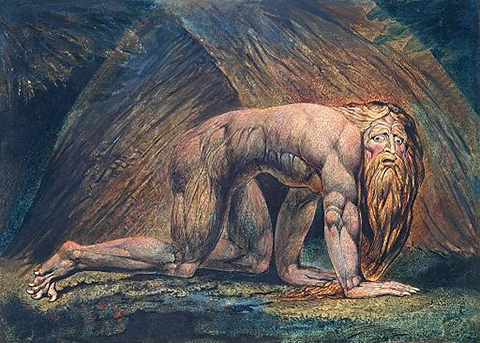 William Blake’s Nebuchadnezzar
William Blake’s Nebuchadnezzar
The Blakean echo is hardly accidental. Of the three Rosicrucian short stories Yeats wrote in the 1890s (“Rosa Alchemica,” “The Tables of the Law,” and “The Adoration of the Magi”), “The Secret Rose” is, as the titles alone suggest, most closely related to the first. The world-traveling hero of “Rosa Alchemica,” the magician Michael Robartes, is a student of comparative literature, especially drawn, as was Yeats himself, to the prophetic poems of William Blake. Blake’s epic The Four Zoas (originally titled Vala, and abandoned in manuscript in 1807) was rediscovered and published in 1893 by none other than Yeats (and his co-editor, Edwin Ellis). In the finale of The Four Zoas, from which Yeats lifted the lines about the “stars” being “blown” about the skies like “sparks,” redeemed Man, having finally purged all the evil in himself, can look at infinity unharmed. Los “rose in all his regenerative power”; the hour of transformation arrives:
The sun has left his blackness & found a fresher morning,
And the mild moon rejoices in the clear & cloudless night,
And Man walks forth from midst of the fires, the evil is all consumed:
His eyes behold the angelic spheres arising night & day;
The stars consumed like a lamp blown out, & in their stead, behold:
The expanding eyes of Man behold the depths of wondrous worlds.
Here we have the potentially divine Man envisioned by so many Gnostics, Hermeticists, Cabbalists, and Rosicrucians: Valentinus’s “new man…more noble in his glorified state” than he was before “the conflagration”: a Man fully human, liberated from all imprisoning limitations, whether of materialism, the merely bodily (Lockean/empiricist) senses, or political tyranny. In the final lines of The Four Zoas, Urthona, the eternal form of Los (and, of the four, the Zoa least in need of redemption) “rises from the ruinous walls/In all his ancient strength.” According to one of Yeats’s (and Joyce’s) favorite phrases of Blake (from an 1800 letter to William Hayley), “The ruins of Time build mansions in Eternity.” In Blake’s anything-but-static Eternity, Urthona, though still ready for combat, is now armed to wage “intellectual war,” the “war of swords” having “departed.” In his single most famous and concise appeal for an imaginative art prophetically inspired and intended to achieve individual and societal redemption, Blake says his “sword” will not “sleep” in his hand. But the weaponry (“Bow of burning gold,” “Arrows of desire,” Spear, and “Chariot of fire”) is to be employed in ceaseless “Mental Fight.” He has, Gnostics would say, achieved gnosis.[28]
§
Gnosis takes many forms. I have already noted what the visionary poet of “The Second Coming” claims to “know,” and mentioned the very different assertion in the drafts, where the rough beast, “knowing its hour come round,” possesses whatever gnosis there is to go round. In “Leda and the Swan” (1925), the sonnet that begins the three-part cycle that ends with “The Second Coming,” we have another annunciation of a new historical era, beginning with a birth, and a hint of gnosis. Did Leda, raped by the swan-god Zeus, “put on his knowledge with his power/ Before the indifferent beak could let her drop?” Here is another poem, like “The Secret Rose” and “The Second Coming,” ending in a question, the mystery-marker of the Sublime. There is, of course, no question about the brutality of the sudden rape, and the indifference of the God following the “shudder in the loins,” which, impregnating Leda, completes Zeus’s mission.
For in fathering Helen of Troy, he also “engenders there” the Trojan War (depicted in imagery at once military and sexual: “The broken wall, the burning roof and tower”) and its sequelae (“And Agamemnon dead”), initiating an historical cycle destined to last until, two thousand years later, another lady, the Virgin Mary, would be visited by the Holy Spirit: another divine bird, his “great wings beating about the room” in Yeats’s “The Mother of God” (1931), a dramatic monologue spoken by the terrified village girl singled out to bear “The Heavens in my womb.” The question raised at the end of “Leda and the Swan” is not merely rhetorical. Did Leda, “her thighs” rather tenderly “caressed/ By the dark webs,” so intrigue the swan-god that he inadvertently held her just long enough (“Before the indifferent beak could let her drop”) for her to participate momentarily in “his knowledge,” the divine gnosis of Zeus himself?
 Leda and the Swan by Jerzy Hulewicz, 1928
Leda and the Swan by Jerzy Hulewicz, 1928
Gnosis also figures in the cryptic poem, “Fragments,” which features, like its far better-known cousin, “The Second Coming,” a strange birth, and a revelation derived from counter-Enlightenment intuition, gnosis. Written between 1931 and 1933, this epigrammatic poem is in two short parts. Here is the first:
Locke sank into a swoon;
The Garden died;
God took the spinning-jenny
Out of his side.
In this parody of Genesis, the role of sleeping Adam, from whose side God took Eve, is usurped by a swooning John Locke, whose empiricist epistemology and distinction between primary and secondary qualities seemed to Yeats, as to George Berkeley and Blake before him, to have fractured the organic unity of the living world, and thus destroyed not only nature but its archetype, the Edenic “Garden.” That the resultant birth, that of the “spinning-jenny,” bears a woman’s name accentuates the irony, and the horror. It was not altogether to the benefit of humanity and a sign of progress, Yeats once mordantly observed, for the home spinning wheel and the distaff to have been replaced by the robotic looms and masculinized factories of the Industrial Revolution. Blake’s god of the fallen world, Urizen, presides over an Enlightenment world-machine perceived as “the Loom of Locke” washed by the “Water-wheels of Newton,” all “cruel Works” with “cogs tyrannic” moving each other “by compulsion” (Jerusalem 15:15-19)
Yeats is never closer to Blake than in this first part of “Fragments,” where he emulates not only his mentor’s attack on Locke (and Newton), but also his genius for epigram and crystallization, Blake being “perhaps the finest gnomic artist in English literature.” In Yeats’s gnomic vision in “Fragments” (I), which has been called “certainly the shortest and perhaps not the least comprehensive history of modern civilization,” the Enlightenment is revealed as a nightmare for the creative imagination; and the monster that rides upon this spirit-sealing sleep of reason is the mechanistic conception of matter, indeed the whole mechanistic rather than organic way of thinking (a crucial contrast Yeats knew from Coleridge, who had borrowed it from A. W. Schlegel), here symbolized by the invention that epitomizes the Industrial Revolution.[29] Yeats replaces the divinely anesthetized flesh of Adam with Locke’s imaginatively inert body (sunk into that fall into division Blake called “Single Vision & Newton’s sleep”), and substitutes for Eve, the beautiful embodiment of Adam’s dream, a mechanical contraption, a patriarchal cog in the dark Satanic mills of which it is proleptic.
 Spinning room in a New England cotton mill, 1916, photo courtesy National Archives
Spinning room in a New England cotton mill, 1916, photo courtesy National Archives
But how does Yeats know all this, and know it to be the “truth”? It wasn’t only from absorbing Blake. Or only from reading Alfred North Whitehead’s Science and the Modern World (1925), a chapter of which, “The Romantic Reaction,” Yeats synopsized with a related variation of the Genesis 2 creation-metaphor, jotting in the margin: “The dry rib (Pope) becomes Eve (Nature) with Wordsworth.”[30] Yeats answers his own question in “Fragments” II:
Where got I that truth?
Out of a medium’s mouth,
Out of nothing it came,
Out of the forest loam,
Out of dark night where lay
The crowns of Nineveh.
Is this mere occult mumbo-jumbo, intended to twist the tail of positivists and empiricists? Well, yes and no. But before coming to conclusions, let’s pause to appreciate the wit of the lines, alive with reversals and allusions. Yeats’s ironic reversal of the birth “out of” the side of Locke takes the form of a counter-“truth,” born “out of” (repeated four times in succession) a variety of sources. The anaphora is Whitmanian— “Out of the cradle endlessly rocking,/ Out of the mocking bird’s throat, the musical shuttle,/ Out of the Ninth-month midnight.” And Whitman’s birth-images may have suggested Yeats’s equally fertile sources: the female “medium’s mouth,” the “forest loam,” and “dark night,” all in organic and fecund contrast to the mechanical, sterile “birth” of the spinning-jenny.
Yeats deliberately begins with what rationalists would dismiss as among the least reputable sources of “truth”: “Out of a medium’s mouth…” Even Madame Blavatsky, whose own experiments had been discredited, told Yeats, who reported it to John O’Leary in a May 1889 letter, that she “hates spiritualism vehemently—says mediumship and insanity are the same thing” (Letters, 125). In “Fragments” (II) Yeats is having some fun, but it is worth mentioning that the poem was written shortly after the first production of one of Yeats’s most dramatic plays, The Words Upon the Window-pane, which centers on a séance, climaxing with our shocked recognition that the female medium is authentic. The one scholarly skeptic who had attended, a specialist in the life and work of Jonathan Swift, is refuted once the post-séance stage is bare except for the female medium, who is suddenly revealed, not to be faking it as he had been sure all along, but to be channeling the tormented ghost of Swift, and thus speaking the sort of spiritual truth Yeats, half-skeptic himself, sought all his life. “All about us,” he concludes his Introduction to the play, “there seems to start up a precise inexplicable teeming life, and the earth becomes once more, not in rhetorical metaphor, but in reality, sacred.”[31]
The second source is philosophically and theologically scandalous. Subverting the venerable axiom, ex nihilo nihil fit, employed by metaphysicians from Parmenides on and by theologians arguing for the necessary existence of God, Yeats boldly declares that the “truth” revealed to him came “Out of nothing,” only to instantly add details that deepen the mystery and sharpen his thrust against the Enlightenment. Coming “Out of the forest loam,/ Out of dark night…” Yeats’s “truth” is generated from fecund earth, once more become “sacred,” and teeming with inexplicable “life,” replacing or restoring the “Garden” earlier said to have “died.” It also comes, out of a mysterious, or occult, “dark night.”
If the spinning-jenny epitomizes the Industrial Revolution, Alexander Pope’s intended epitaph for Isaac Newton epitomizes the Scientific Revolution and the Enlightenment: “Nature and Nature’s laws lay hid in night,/ God said, Let Newton be! And all was light.” Pope’s couplet, like Yeats’s opening quatrain, plays off Scripture, with Newton now assuming God’s role as Creator by verbal fiat: “And God said, ‘Let there be light,’ and there was light” (Genesis 1:3). Pope avoids blasphemy; after all, it was God who said “Let Newton be!” Until the advent of the principal scientific genius of the European Enlightenment, the universe existed, but “Nature and Nature’s laws lay hid in night.” Adopting that darkness, and reversing the “laws” that prior to Newton “lay hid in night,” Yeats tells us that his Counter-Enlightenment truth came “Out of dark night where lay,” not Nature’s scientific laws, but “The crowns of Nineveh.”
 Archaeologist Henry Layard’s image of Nineveh
Archaeologist Henry Layard’s image of Nineveh
Why Nineveh in particular? For one thing, Yeats loved Arthur O’Shaughnessy’s “Ode” celebrating poets as music-makers and prophets. The famous final stanza (and these are the lines Yeats always cited) begins: “We, in the ages lying/ In the buried past of the earth,/ Built Nineveh with our sighing,/ And Babel itself with our mirth.” When, in “Fragments,” the golden crowns of Nineveh flame up “Out of dark night,” what is evoked is more O’Shaughnessy’s city of the poetic imagination than Ashurbanipal’s capital, majestic as that may have been. For Yeats was looking, not merely back to old Nineveh, but cyclically ahead, to the resuscitation of the ancient—a past buried, dark, chthonic, and, here, female. For, as Yeats seems to have known, the Assyrians named their capital city Nin-evah—after “Holy Mother Eve,” the Mother-womb, or Goddess of the Tree of Life in their mythology. Displaced by a machine in the withered Garden of the first part of “Fragments,” Eve, in a return of the repressed, is restored, re-surfacing in the final word of part II, in the disguised but detectable form of the city named for her. Recalling the role of Sophia, often opposed to the male Logos in esoteric tradition, including Gnosticism, I’m reminded as well that gnosis is a Greek female noun.
At his most winning, Yeats reminds us of Hamlet’s rejoinder to his skeptical and scholastic friend: “there are more things in heaven and earth, Horatio, than are dreamt of in your philosophy.” But we are right to be wary when Yeats crosses the threshold into the occult. Though concurring in, in fact shaping, Yeats’s cavalier dismissal of Locke and Newton as Enlightenment icons, Blake would be appalled by his disciple’s delving into the occult darkness. Though Yeats tended to mystify and occultize him, Blake in fact condemned the heathen “God of this World & the Goddess Nature/ Mystery, Babylon the Great” (Jerusalem 93: 22-25). But what Blake rejects here are the very things his prodigal son celebrates as the matrix of vision: the forest loam and the mysterious dark night where lay the crowns of ancient Nineveh, repository of Assyro-Babylonian mythology.
Of course, Yeats’s recourse to the occult is one measure of the intensity of his need to expedite what he called in that earlier-cited 1892 letter to John O’Leary “the revolt of the soul against the intellect” (Letters, 211). That is, somewhat reductively, a description of the Romantic Revolution, the noble attempt to beat back, through restored wonder at a re-enchanted nature and the transformative power of the creative imagination, the passivity of mind and mechanistic materialism that had reigned (Yeats insists in introducing his 1936 anthology of modern poetry) since “the end of the seventeenth century” down to the present. With, he emphasizes— as had Alfred North Whitehead, though his Romantic hero was Wordsworth rather than Blake or Shelley—“the exception of the period beginning at the end of the eighteenth century” and ending “with the death of Byron”: that is to say, the “brief period” of the Romantic revolt, a span “wherein imprisoned man beat upon the door.”[32]
That compelling metaphor was repeated the next year in “An Acre of Grass,” Yeats’s late poem (a companion of “What Then?”), in which he prays to be granted the creative “frenzy” and “old man’s eagle mind” he had read of in Nietzsche’s Daybreak. He also specifically invokes “That William Blake/ Who beat upon the wall/ Till truth obeyed his call”—a “truth” related to, but not identical to, the “truth” Yeats claimed in “Fragments” (II) came to him “Out of” Counter-Enlightenment sources both Romantic and, most dubiously, out of a mysterious “dark night” whose counter-Enlightenment frisson will be offset for many readers by resistance to the dangerous irrationality of the occult.
§
Night was not normally privileged over day in Yeats’s thinking. Blake and Nietzsche, his great mentors, were both celebrators of daybreak, of Blake’s “glad day.” In 1902, enthralled by his “excited” reading of “that strong enchanter, Nietzsche,” Yeats drew in the margin of an anthology of selections from the German philosopher a diagram crucial to understanding much if not all of Yeats’s subsequent thought and work. He grouped under the heading NIGHT: “Socrates, Christ,” and “one god”— “denial of self, the soul turned toward spirit seeking knowledge.” And, under the heading DAY: “Homer” and “many gods”—“affirmation of self, the soul turned from spirit to be its mask & instrument when it seeks life.”[33] Reminiscent of Madame Blavatsky’s alternating “days and nights of Brahma,” that diagrammatical skeleton, anticipated by the pull between eternity and the temporal in such early poems as “To the Rose upon the Rood of Time,” is later fleshed out by Yeats’s own chosen exemplar in “Vacillation”—“Homer is my example and his unchristened heart”—and Self’s choice of Sato’s sword wound in “embroidery” of “Heart’s purple”: “all these I set/ For emblems of the day against the tower/ Emblematical of the night.” Ultimately, they are the emblems of a life-seeking Poet who, without “denial of self,” attempts to transcend the antithesis set up a quarter-century earlier in that Nietzsche anthology, usurping Soul’s role by also being oriented “toward spirit seeking knowledge,” or gnosis.
“A Dialogue of Self and Soul” is in many ways Yeats’s central poem since its ramifications reach before and after, and it features perhaps the greatest of Yeats’s fused symbols: the “ancient blade” (the gift of a Japanese admirer, Junzo Sato) scabbarded and bound in complementary “female” embroidery. That sword and winding silk are not only “emblems of the day against the tower/ Emblematical of the night.” Fusing the sacred and the profane, war and love, the phallic and the vaginal, the sheathed and silk-wound sword becomes Yeats’s symbol of gyring life, set against the vertical ascent urged by the Neoplatonic Soul. What Gnostics put asunder, body and spirit, Yeats unites. And yet, as we will see, Self’s final act of self-redemption, magnificent but heretical, is as Gnostic as it is Nietzschean.
In the opening movement of the poem, the half in which there is still a semblance of actual dialogue, hectoring Soul repeatedly demands that Self “fix” every thought “upon” the One, “upon” the steep ascent, “upon” the occult Pole Star, “upon” the spiritual quarter where all thought is done. But the recalcitrant Self remains diverted by the Many, by earthly multiplicity, by the sword wound in embroidery replicating the windings of mortal nature. In unpublished notes, Yeats describes “Dialogue” as “a variation on Macrobius” (the “learned astrologer” of “Chosen,” the central poem of A Woman Young and Old). Yeats had been directed by a friend (F. P. Sturm) to Macrobius’s Neoplatonic Commentary on Cicero’s Somnium Scipionis. In Cicero’s text, despite the admonition of Scipio’s ghostly ancestor, “Why not fix your attention upon the heavens and contemn what is mortal?,” young Scipio admits he “kept turning my eyes back to earth.” According to Macrobius, Scipio “looked about him everywhere with wonder. Hereupon his grandfather’s admonitions recalled him to the upper realms.” Though the agon between the Yeatsian Self and Soul is identical to that between young Scipio and his grandfather’s spirit, the Soul in Yeats’s poem proves a much less successful spiritual guide than that ghost.[34]
Turning a largely deaf ear to Soul’s advocacy of the upward path, Self (revealingly called “Me” in the drafts of the poem) has preferred to focus downward, on life, brooding on the consecrated blade upon his knees with its tattered but still protective wrapping of “Heart’s purple.” Its “flowering, silken, old embroidery, torn/ From some court-lady’s dress and round/ The wooden scabbard bound and wound” makes the double icon “emblematical” not only of “love and war,” but of the ever-circling gyre: the eternal, and archetypally female, spiral. When Soul’s paradoxically physical tongue is turned to stone with the realization that, according to his own austere doctrine, “only the dead can be forgiven,” Self takes over the poem. He goes on to win his way, despite difficulty, to a self-redemptive affirmation of life.
 Winding stair in Thoor Ballylee tower, photo by Walt Hunter via Jacket2 CC 3.0
Winding stair in Thoor Ballylee tower, photo by Walt Hunter via Jacket2 CC 3.0
Self begins his peroration defiantly: “A living man is blind and drinks his drop./ What matter if the ditches are impure?” This “variation” on Neoplatonism, privileging life’s filthy downflow, or “defluction,” over the Plotinian pure fountain of emanation, is followed by an even more defiant rhetorical question: “What matter if I live it all once more?” “Was that life?” asks Nietzsche’s Zarathustra. “Well then! Once more!”[35] But Self’s grandiose and premature gesture is instantly undercut by the litany of grief that Nietzschean Recurrence, the exact repetition of the events of one’s life, would entail—from the “toil of growing up,” through the “ignominy of boyhood” and the “distress” of “changing into a man,” to the “pain” of the “unfinished man” having to confront “his own clumsiness,” then the “finished man,” old and “among his enemies.” Despite the Self’s bravado, it is in danger of being shaped, deformed, by what Hegel and, later, feminist critics have emphasized as the judgmental Gaze of Others. Soul’s tongue may have turned to stone, but malignant, almost Archon-like ocular forces have palpable designs upon the assaulted Self:
How in the name of Heaven can he escape
That defiling and disfigured shape
The mirror of malicious eyes
Casts upon his eyes until at last
He thinks that shape must be his shape?
This would be, as Yeats says in “Ancestral Houses” (1921), to lose the ability to “choose whatever shape [one] wills,” and (echoing Browning’s arrogant Duke, who “choose[s] never to stoop”) to “never stoop to a mechanical / Or servile shape, at others’ beck and call”: Yeats’s rejection of “slave morality” in favor of Nietzschean “master morality.” The centrality of “A Dialogue of Self and Soul” is enhanced by its repercussions in Yeats’s own work and its absorption of so many influences outside the Yeatsian canon. Aside from the Body/Soul debate-tradition, from Cicero to Milton and Marvell, and the combat between Nietzsche on the one hand and Neoplatonism on the other, this Yeatsian psychomachia incorporates, among other poems in the Romantic tradition, another Browning poem, “Childe Roland to the Dark Tower Came,” which supplies those “malicious eyes” that cast upon Self a distorting lie so powerful that he temporarily falls victim to it, and Blake’s feminist Visions of the Daughters of Albion.[36] Self’s eventual victory, like Oothoon’s, is over severe moralism, the reduction of the body to a defiled object. In Yeats’s case, Self’s victory is a triumph over his own Neoplatonism. Though Gnosticism, too, seeks liberation from the body, the heterodox Gnostic emphasis on self-redemption makes it compatible with Blake, Nietzsche, and Yeats. “Dialogue” represents Nietzschean Selbstüberwindung, creative “self-overcoming,” for, as Yeats said, “we make out of the quarrel with others, rhetoric, but of the quarrel with ourselves, poetry.”
§
Since “Dialogue” is a quarrel with himself, the spiritual tradition is not simply dismissed, here any more than in the Crazy Jane or Woman Young and Old sequences. For Yeats, the world of experience, however dark the declivities into which the generated soul may drop, is never utterly divorced from the world of light and grace. The water imagery branching through Self’s peroration subsumes pure fountain and impure ditches. There is a continuum. The Plotinian fountain cascades down from the divine One through mind or intellect (nous) to the lower depths. As long, says Plotinus, as nous maintains its gaze on and contemplation of God (the First Cause or “Father”), it retains the likeness of its Creator (Enneads 5.2.4). But, writes Macrobius (Commentary 1.14.4), the soul, “by diverting its attention more and more, though itself incorporeal, degenerates into the fabric of bodies.”
Viewed from Soul’s perspective, Self is a falling off from the higher Soul. When the attention, supposed to be fixed on things above, is diverted below—down to the blade on his knees wound in tattered silk and, further downward, to life’s “impure” ditches—the Self has indeed degenerated into the “fabric,” the tattered embroidery, of bodies. And yet, as usual in later Yeats, that degradation is also a triumph, couched in terms modulating from stoic contentment through fierce embrace to a casting out of remorse, leading to self-forgiveness and redemption:
I am content to live it all again
And yet again, if it be life to pitch
Into the frog-spawn of a blind man’s ditch,
A blind man battering blind men;
Or into that most fecund ditch of all,
The folly that man does
Or must suffer, if he woos
A proud woman not kindred of his soul.
X
I am content to follow to its source
Every event in action or in thought;
Measure the lot, forgive myself the lot!
When such as I cast out remorse
So great a sweetness flows into the breast
We must laugh and we must sing,
We are blest by everything,
Everything we look upon is blest.
Following everything to the “source” within, Self spurns Soul’s tongue-numbing Neoplatonic doctrine that “only the dead can be forgiven.” Instead, having pitched with vitalistic relish into life’s filthy frog-spawn, Self audaciously (or blasphemously) claims the power to forgive himself. In a similar act of self-determination, Self “cast[s] out” remorse, reversing the defiling image earlier “cast upon” him by the “mirror of malicious eyes.” The sweetness that “flows into” the self-forgiving breast redeems the frog-spawn of the blind man’s ditch and even that “most fecund ditch of all,” the painful but productive folly that is the bittersweet fruit of unrequited love.
That sweet flow also displaces the infusion (infundere: “to pour in”) of Christian grace through divine forgiveness. It is a claim to autonomy at once redemptive and heretical, and a masterly fusion of Yeats’s two principal precursors. “Nietzsche completes Blake, and has the same roots,” Yeats claimed. If, as he also rightly said, Blake’s central doctrine is a Christ-like “forgiveness of sins,” the sweetness that flows into the suffering but self-forgiving “breast,” the breast in which Blake also said “all deities reside,” allies the Romantic poet with Nietzsche. He had been preceded by the German Inner Light theologians, but it took Nietzsche, the son of a Protestant minister, to most radically transvalue the Augustinian doctrine that man can only be redeemed by divine power and grace, a foretaste of predestination made even more uncompromising in the strict Protestant doctrine of the salvation of the Elect as an unmerited gift of God. One must find one’s own “grace,” countered Nietzsche in Daybreak, a book read by Yeats. He who has “definitively conquered himself, henceforth regards it as his own privilege to punish himself, to pardon himself”—in Yeats’s phrase, “forgive myself the lot.” We must cast out remorse and cease to despise ourselves: “Then you will no longer have any need of your god, and the whole drama of Fall and Redemption will be played out to the end in you yourselves!”[37]
But, as I earlier suggested, this is as Gnostic as it is Nietzschean. The most formidable of the historical Gnostics, Valentinus, claimed that the person who received gnosis could purge himself of the ignorance associated with matter. He describes the process in the “Gospel of Truth,” a Valentinian text unearthed at Naj Hammadi in 1945. In stark contrast with the orthodox Christian doctrine of salvation through the grace of God, Valentinus declared that “It is within Unity that each one will attain himself; within gnosis he will purify himself from multiplicity into Unity, consuming matter within himself like a fire, and darkness by light, death by life.” In the best-known Valentinian formulation, “what liberates us is the gnosis of who we were, what we became; where we were, whereunto we have been thrown; whither we hasten, from what we are redeemed; what birth is, and what rebirth.” Here (Excerpts from Theodotus) and elsewhere in Gnostic literature, salvation is defined, as it is in Romanticism (from which Gnosticism often seems less a deviation than a precursor), as an escape into the self, where, through introspective private vision, we find true knowledge, gnosis. The spiritual quest is solitary. When Sturge Moore, who was designing the book cover for the volume containing “Byzantium,” asked if Yeats saw “all humanity riding on the back of a huge dolphin,” Yeats responded, “One dolphin, one man” (Yeats-Moore Correspondence, 165). There is no real need for any Other; the individual who has attained gnosis is the whole and sole agent of redemption.[38]
In the now-famous Gospel of Thomas, the most audaciously heterodox of the Naj Hammadi texts, the Gnostic Jesus of Thomas tells us, “Whoever drinks from my mouth will become as I am.” The central teaching, again, is internal salvation, redemption from within: “If you bring forth what is within you, what you bring forth will save you. If you do not bring forth what is within you, what you do not bring forth will destroy you.” If Emerson hadn’t been speaking more than a century before the Gospel of Thomas had been rediscovered, he might have been accused of plagiarizing from that long-suppressed text in his Divinity School Address, the bombshell he exploded at Harvard in 1838. Emerson celebrated Jesus not as divine, nor even as Lord, but as the religious thinker who first realized that “God incarnates himself in man.” He informed the shocked ministers and thrilled graduating students in the audience: “That is always best which gives me to myself. That which shows God in me, fortifies me. That which shows God out of me, makes me a wart and a wen.” As heterodox as Thomas’s, Emerson’s Jesus is imagined saying, in “a jubilee of sublime emotion, ‘I am divine. Through me, God acts; through me, speaks. Would you see God, see me; or see thee, when thou also thinkest as I now think.’” [39]
It is primarily under the twin auspices of Blake and Nietzsche, as manipulated by Yeats, that the Self finds the bliss traditionally reserved for those who follow the ascending path. But that heretical self-redemption is also Gnostic. Whatever its various “sources,” Yeats’s alteration of the orthodox spiritual tradition completes Blake, who considered cyclicism the ultimate nightmare, with that Nietzsche whose exuberant Zarathustra jumps “with both feet” into the “golden-emerald delight” of self-redemption and Eternal Recurrence, exultantly embraced as the ultimate affirmation of life in the “Yes and Amen Song” that concludes part III :
In laughter all that is evil comes together, but is pronounced holy and absolved by its own bliss; and if this is my alpha and omega, that all that is heavy and grave should become light, all that is body, dancer, all that is spirit, bird—and verily that is my alpha and omega: oh, how should I not lust after eternity and the nuptial ring of rings, the ring of recurrence?[40]
We might say that Zarathustra here also “jumps” into a cluster of images and motifs we would call Yeatsian, remembering, along with Self’s laughing, singing self-absolution, “Among School Children,” where “body is not bruised to pleasure soul,” and we no longer “know/ The dancer from the dance”; the natural and golden birds of the Byzantium poems; and the final transfiguration of Yeats’s central hero, both in The Death of Cuchulain and “Cuchulain Comforted,” into a singing bird.
In “A Dialogue of Self and Soul,” the Yeatsian-Nietzschean Self, commandeering the spiritual vocabulary Soul would monopolize, affirms Eternal Recurrence, the labyrinth of human life with all its tangled antinomies of joy and suffering. In subverting the debate-tradition, Yeats leaves Soul with a petrified tongue, and gives Self a final chant that is among the most rhapsodic in that whole tradition of secularized supernaturalism Yeats inherited from the Romantic poets and from Nietzsche. In a related if somewhat lower register, it is also the vision of Crazy Jane and the Woman Young and Old.
Of course, Self and Soul are aspects of the one man, and, as Yeats jotted in his 1930 Diary, “Man can only love Unity of Being.” The internal “opponent” we debate with “must be shown for a part of our greater expression” (Essays and Introductions, 362). This resembles the Valentinian Unity “each one will attain himself,” overcoming “multiplicity.” Yeats’s friend, AE (George Russell) to whom he sent a copy of The Winding Stair, said that of the many superb poems in that remarkable volume he liked “best” of all “A Dialogue of Self and Soul.” Acknowledging his friend’s gift, he wrote, “I am on the side of Soul, but know that its companion has its own eternal claim, and perhaps when you side with the Self it is only a motion to that fusion of opposites which is the end of wisdom.”[41]
Having astutely synopsized the central Yeatsian dialectic, Russell was tentatively noting its reflection in the poem’s impulse, beneath the manifest debate of opposites, toward fusion. We seem to achieve fusion in the secular beatitude of Self’s final chant. But Yeats was not AE, the “saint,” as Mrs. Yeats described him, to her husband’s “poet,”[42] and the poet in Yeats, the Self, gives us—in the whole of “A Dialogue of Self and Soul” and particularly in this magnificent final affirmation—an overcoming of Christian and Neoplatonic dualism and defilement of the body by way of a heterodox, “heretical” self-blessing at once Blakean, Nietzschean, and Gnostic.
§
Despite Self’s triumph in this central poem, Yeats remained torn between what he called in “Vacillation” (echoing Kant) “the antinomies” of soul and body, by antithetical longings for the Otherworld and, on the most autobiographical level, for Maud Gonne: that extravagantly beautiful but never fully attainable femme fatale, the Muse that haunts the life and work of the twentieth century’s greatest love poet. His occult speculations were always entangled in his emotional life. “His aim,” Graham Hough concludes, “was to redeem passion, not to transcend it, and a beatitude that has passed beyond the bounds of earthly love could not be his ideal goal” (The Mystery Religion of W. B. Yeats, 119). Unsurprisingly, then, in the alembic of Yeats’s paradoxical imagination, the search for hidden spiritual knowledge is often merged with carnal knowledge. Even then, however, the beloved proves to be ultimately unattainable, even if physical consummation has been briefly attained, as it was, in December 1908, with the elusive Maud. Yeats was both impressed and deeply moved (responding to both human tragedy and Latinate rhetorical majesty) by a resonant phrase he encountered—“The tragedy of sexual intercourse is the perpetual virginity of the soul”—in reading John Dryden’s translation of Lucretius, one of whose arguments in De rerum natura is that sexual union can never provide complete satisfaction.
 Maud Gonne
Maud Gonne
In a 1931 conversation with John Sparrow, then Fellow of All Souls’ College, Oxford, Yeats cited and expanded on Lucretius’ famous lines from the end of the long passage (1030-1237) on sexual love concluding Book IV of De rerum natura. In glossing Dryden’s translation of the Roman poet, Yeats seems to echo the Gnostics’ doubly radical dualism, a dualism between man and nature, but also between nature and the transmundane God who is utterly Other, Alien, and unknowable—except through gnosis. Yeats’s citation and commentary also seem worth quoting because he appears to me to be looking back to four of his own poems, three of them written in 1926-27, the fourth in 1931. Two of them, “A Dialogue of Self and Soul” and “Among School Children,” are indisputably major. The other two, lesser lyrics but closely related to those major texts, are “Summer and Spring,” from Yeats’s Man Young and Old sequence, and, the most splendid of the Crazy Jane lyrics, the poignant yet triumphant “Crazy Jane and Jack the Journeyman,” written in 1931, the same year as his conversation with John Sparrow. But here, finally, is what Yeats told Sparrow:
The finest description of sexual intercourse ever written was in John Dryden’s translation of Lucretius, and it was justified; it was introduced to illustrate the difficulty of two becoming a unity: “The tragedy of sexual intercourse is the perpetual virginity of the soul.” Sexual intercourse is an attempt to solve the eternal antinomy, doomed to failure because it takes place only on one side of the gulf. The gulf is that which separates the one and the many, or if you like, God and man.[43]
In “Summer and Spring” (poem VIII of the autobiographical sequence in which the poet is masked as an anonymous “Man Young and Old”), two lovers grown old reminisce “under an old thorn tree.” When they talked of growing up, they “Knew that we’d halved a soul/ And fell the one in t’other’s arms/ That we might make it whole.” We recall, as we are meant to, “Among School Children,” written in the same year. In transitioning from the first to the second stanza of this great poem, we shift abruptly from Yeats’s external persona as senator and school inspector, “a sixty-year-old smiling public man,” to the private, inner man, the poet himself reporting an incident Maud Gonne once related from her childhood:
I dream of a Ledaean body bent
Above a sinking fire, a tale that she
Told of a harsh reproof, or trivial event
That changed some childish day to tragedy—
Told, and it seemed that our two natures blent
Into a sphere from youthful sympathy,
Or else, to alter Plato’s parable,
Into the yolk and white of the one shell.
In “Summer and Spring” there is gnosis; the lovers “Knew that we’d halved a soul.” The tragedy in this stanza of “Among School Children” lies in the qualifying “seemed” and in the need “to alter Plato’s parable”—a “Lucretian” alteration, since the blending here is empathetic and partial (yolk and white remain separated even within the unity of the “one shell”) rather than the full sexual union of Aristophanes’ haunting fable in Plato’s Symposium. It is precisely this “whole” union that the old man claims in “His Memories” (poem VI of A Man Young and Old)[44] and in “Summer and Spring,” which concludes with a sexual variation on the Unity of Being symbolized by the dancer and “great-rooted blossomer” of “Among School Children”: “O what a bursting out there was,/ And what a blossoming,/ When we had all the summer-time/ And she had all the spring!”
But even here, despite that “fecund” blossoming, it is all memory and heartache. Two decades later, that night in December 1908, no matter how fleeting, remains paramount among the “memories” of Yeats’s “Man Old.” In “real life,” however, after their night of lovemaking in that Paris hotel, Maud had quickly put the relationship back on its old basis, a “spiritual marriage,” informing Yeats in a morning-after note that she was praying that he would be able to overcome his “physical desire” for her. In a journal entry the following month (21 January 1909), Yeats referred despairingly but realistically to the “return” of Maud’s “old dread of physical love,” which has “probably spoiled her life….I was never more deeply in love, but my desires must go elsewhere if I would escape their poison.”
 Maud Gonne
Maud Gonne
 Yeats and his wife Georgie, late 1920s
Yeats and his wife Georgie, late 1920s
Hence, those “others,” including Yeats’s wife, destined to become “friends,” or sexual partners, if never a fully satisfactory replacement for “that one” (as he refers to her, namelessly and climactically in his poem “Friends”). Since Maud was, ultimately, “not kindred of his soul,” Yeats sought complete union, if only in memory, in poetry, and masked as “A Man Young and Old” or, empathetically switching genders, in the vision of Crazy Jane. Partly based on an old, crazed Irish woman, Jane is not merely promiscuous. Yeats’s occult experiences had led him to a belief in feminized, often sexualized, spirituality, early embodied in the beautiful, highly-sexed actress Florence Farr, one of the most gifted women visionaries of the Golden Dawn (and, briefly, his lover). Such female adepts, whose powers he admired and envied; women of “second sight” (his own sister, “Lily,” his uncle George Pollexfen’s servant, Mary Battle); his experiences at séances, where the mediums were almost invariably women: all convinced him of a female and erotic dimension in spirituality. The artistic result was the two powerful poetic sequences, A Woman Young and Old and the Crazy Jane poems. The third poem in the Jane sequence, “Crazy Jane on the Day of Judgment,” begins:
“Love is all
Unsatisfied
That cannot take the whole
Body and soul”:
And that is what Jane said.
It ends with Jane still holding forth, now emphasizing her version of gnosis, but one that would certainly resonate with most Gnostics. While mystical experience was possible during life, virtually all Gnostics believed that the true ascent, in which (in Jane’s phrase) “all could be known,” took place after death, with the return of the spirit to its divine origins, the spark of life redeemed and reunited with the One from which it had been severed and alienated by its immersion in the material, temporal world. For most of the Crazy Jane sequence, unconventional Jane, making the most of her time on earth, will take a decidedly unorthodox Itinerarium mentis ad Deum. But here we find her, yearning for Time to disappear and gnosis to be achieved:
“What can be shown?
What true love be?
All could be known or shown
If Time were but gone.”
Jane’s male interlocutor—responding, “That’s certainly the case”—might be Yeats himself, who thought Lucretius remained “justified” in insisting on the “failure,” in this life, to bridge “the gulf,” the insuperable “difficulty of two becoming a unity.”
The poem that immediately follows Jane’s thoughts on the Day of Judgment, “Crazy Jane and Jack the Journeyman,” responds more personally, magnificently, and certainly more audaciously, to Dryden’s Lucretius- and Epicurus-based assertion that “The tragedy of sexual intercourse is the perpetual virginity of the soul.” Writing in 1875, the Victorian essayist J. M. Symonds qualified what Dryden before him and Yeats after him designated a “tragedy,” though Symonds goes on to emphasize, even more than Yeats, the Lucretian, Epicurean—and, I would add, Gnostic—bleakness and frustration of lovers whose immaterial souls are entrammeled in the flesh: “There is something almost tragic,” writes a sympathetic but austere Symonds, “in these sighs and pantings and pleasure-throes, and the incomplete fruition of souls pent up within their frames of flesh.”[45] Symonds seems to reflect, along with the frustration described by Lucretius (and Platonism and Neoplatonism in general), the dualism of the Gnostics, concerned above all with freeing the spirit dwelling within (to quote two passages from Genesis well known to Gnostics) that “coat of flesh” imprisoning “the spark of life” (3:21, 3:78).
In the beginning (in what Shelley would later call “the white radiance of eternity”), we were “in the light,” uncreated, fully human, and also divine. What makes us free, in the present and future, the Gnostics insisted, is the gnosis of who we were back then, when we were “in the light.” Crazy Jane, returning to the One, “Shall leap into the light lost/ In my mother’s womb.” That Blakean infant joy marks the exuberant climax of her vision. But she had begun by asserting her own gnosis, shaped by earthly experience:
I know, although when looks meet
I tremble to the bone,
The more I leave the door unlatched
The sooner love is gone,
For love is but a skein unwound
Between the dark and dawn. …
Her knowledge of the transience of sexual love has not driven Jane to abstinence, despite the hectoring of the Bishop (her antagonist in this sequence) that she should “Live in a heavenly mansion,/ Not in some foul sty.” In that poem, “Crazy Jane Talks with the Bishop” (sixth in the sequence), Jane tells the Bishop, a “religious” Soul-spokesman nevertheless fixated on “those breasts,” where her God—neither Jehovah nor Jesus, but Eros—has “pitched” (temporarily set up as one would a tent) his mansion. It is not up among the stars as a “heavenly mansion” (Yeats has the Bishop borrow that lofty sty-disdaining phrase from Platonism and Christianity, from Pietro Bembo and the Gospel of John, 14:2). Love’s mansion is “pitched” (with, I suspect, a pun on darkened), not up but down, inter urinam et faeces, “in/The place of excrement.” And her final, definitely punning but serious news for the Bishop, is that “Nothing can be sole, or whole/ That has not been rent”: a sexual/spiritual variation on the archetypal cycle of original unity, division, and reunification and completion.
Despite the graphic nature of her language here, Jane is no more a simple materialist than is Augustine, or Swift, or Blake, whose excremental yet visionary vocabulary Yeats has her echo. What Jane insists on is the beauty of both the physical and the ideal world, with “Love” the tertium quid mediating between them. Love is the “great spirit” or “daemon” celebrated by that Sophia-figure, Diotima, presented in the Symposium by Socrates, whose simplistic dualism between good and evil, “fair” and “foul,” she corrects by presenting Love as “a mean between them,” a yoker of apparent opposites, a creator of unity out of division. (Symposium 202-3).

Whatever its other parallels and sources, Jane’s vision is also Gnostic, at least reflective of some aspects of Gnosticism, which is, in general, hostile to “law,” especially to Old Testament law and the sort of puritanical strictures the Bishop wants to impose on Jane. Historical Gnosticism ran the ethical gamut from extreme asceticism to, at its most unconventional, robust promiscuity. The charges, by early Christian opponents, of Gnostic orgies were exaggerated (or at least unsupported by evidence). However, two Gnostic sects (the Carpocrations and the Cainites) held that, in order to be freed from the power of the Archons, the world-creating angels who would “enslave” them, men and women had to “experience everything.” No one, said Carpocrates, “can escape from the power” of the Archons, “but that he must pass from body to body until he has experience of every kind of action which can be practiced in this world, and when nothing is any longer wanting to him, then his liberated soul should soar upwards to that God who is above the angels, the makers of the world.” By “fulfilling and accomplishing what is requisite,” the liberated soul will be saved, “no longer imprisoned in the body.”[46] This is certainly in accord with Jane’s notably embodied theory of illumination through a sexual liberation that is ultimately spiritual and salvivic:
A lonely ghost the ghost is
That to God shall come;
I—love’s skein upon the ground,
My body in the tomb—
Shall leap into the light lost
In my mother’s womb.
x
But were I left to lie alone
In an empty bed,
The skein so bound us ghost to ghost
When he turned his head
Passing on the road that night,
Mine must walk when dead.
Most readers of Yeats, even Yeatsian scholars familiar with the finale of the Enneads of his beloved Plotinus, misread the central and crucial stanza, a misreading based on an understandably negative response, when the word is taken out of context, to the adjective “lonely.” It is in fact an ultimate affirmation. Jane will come to God as a “lonely ghost,” the climax of her “flight of the alone to the Alone.” These, the final words of the Enneads, are also memorably recalled by Yeats’s friend Lionel Johnson at the climax of “The Dark Angel,” a poem Yeats rightly admired: “Lonely unto the lone I go,/ Divine to the Divinity.”
Jane’s transcendence is earned not (to echo the final stanza of “Among School Children”) through a body-bruising, soul-pleasuring abstinence, but (since nothing can be sole or whole that has not been rent) by utterly unwinding, through experience, what Blake called (in The Gates of Paradise) “the sexual Garments.” Though “love is but a skein unwound/ Between the dark and dawn,” if left unwound, it would bind her to the earth, condemning her ghost, like that of her true lover, Jack, to “walk when dead.” That skein fully unwound, we are to go to our graves (to use a Miltonic phrase, but hardly his meaning), “all passion spent.” Yeats told an interviewer at this time, “If you don’t express yourself, you walk after you’re dead. The great thing is to go empty to your grave.”
To be liberated from those world-making angels who would enslave us, we must, Carpocrates and some other Gnostics insisted, “experience” every action possible on earth; then, with nothing left to be experienced, the liberated soul will “soar upwards to that God who is above the angels,” those makers of the fallen world. Yeats confided to Olivia Shakespear, “I shall be a sinful man to the end and think upon my deathbed of all the nights I wasted in my youth.”[47] He was fond of quoting a passage from Blake’s Vision of the Last Judgment: two sentences which, with their emphasis on both the “realities of intellect” and the need for the passions to “emanate” in a way alien to Plotinus, would appeal to some Gnostics: “Men are admitted into Heaven not because they have curbed and governed their passions, but because they have cultivated their understandings. The treasures of heaven are not negations of passion, but realities of intellect, from which the passions emanate uncurbed in their eternal glory.”[48] The Gnostic Carpocrates would endorse that vision of the Last Judgment. Whatever he might have thought of Crazy Jane’s promiscuous theology, Blake himself saw no puritanical line demarcating the human heart and loins from the human head and spirit.
§
Finally, the Seeker-theme, the quest for gnosis, informs a number of late, great poems. I’m thinking of “Lapis Lazuli,” and of three death-poems: “Cuchulain Comforted,” “Man and the Echo,” and the seemingly colloquial debate-poem, “What Then?” If I had to select just one last testament of Yeats, aside from Self’s chant at the end of “A Dialogue of Self and Soul,” the choice would narrow to the final movements of “Lapis Lazuli,” “Cuchulain Comforted,” and “Man and the Echo.” In their own ways, each of these poems constitutes wisdom writing, a quest for gnosis, or the acknowledgment that it may not be attainable in this life. That is true as well of the apparently more casual, but no less momentous, “What Then?”
Written in July 1936, “Lapis Lazuli” was published with war imminent. Yeats is annoyed by those who cannot abide the gaiety of artists creating amid impending catastrophe, unaware of the deep truth—known to Hindu mystics, to Nietzsche, and to Arthur O’Shaughnessy, whose creative artists “built Nineveh” and Babel out of their own “sighs” and “mirth”—that “All things fall and are built again/And those that build them again are gay.” To counter the consternation of those who are “sick of the palette and fiddle-bow,/ Of poets that are always gay,” women dismissed as “hysterical,” Yeats presents Shakespearean figures who—like Ophelia, Cordelia, and (by implication) Cleopatra—“do not break up their lines to weep.” Above all, “Hamlet and Lear are gay;/ Gaiety transfiguring all that dread.” Fusing western heroism with Eastern serenity and Nietzsche’s Zarathustrian joy (“He who climbs the highest mountains laughs at all tragic plays and tragic seriousness”), the poem turns in its final movement to the mountain-shaped lapis lazuli sculpture given to Yeats as a gift, and which, in turn, giving the poet his title, serves as the Yeatsian equivalent of Keats’s Grecian urn.
Two Chinamen, behind them a third,
Are carved in lapis lazuli;
Over them a long-legged bird,
A symbol of longevity;
The third, doubtless a serving man,
Carries a musical instrument.
Aside from the obvious resemblance to the Grecian urn, the repeated “or” in the lines that follow seals the connection, with description yielding to a stunning exercise of the creative imagination, worthy of its precursor, the fourth stanza of Keats’s ode. Since the place of origin of the figures in the sacrificial procession is not depicted on the urn, Keats speculates: “What little town by river or seas-shore,/ Or mountain-built….” Yeats ups the ante to four repetitions:
Every discoloration of the stone;
Every accidental crack or dent,
Seems a water-course or an avalanche,
Or lofty slope where it still snows
Though doubtless plum or cherry-branch
Sweetens the little half-way house
Those Chinamen climb towards, and I
Delight to imagine them seated there;
There, on the mountain and the sky,
On all the tragic scene they stare.
One asks for mournful melodies;
Accomplished fingers begin to play.
Their eyes mid many wrinkles, their eyes,
Their ancient glittering eyes are gay.
Yeats turns every discoloration and “Every accidental crack or dent”[49] into a feature of the mountain landscape. But the even greater creative leap in this exquisite final movement is the setting of those sculpted figures, frozen in lapis as Keats’s were on the marble urn, into motion, with the poet delighting to “imagine” them having attained the prospect of the gazebo half-way up the mountain. That the perspective is not quite sub specie aeternitatis; that the “little half-way house” is situated at the midpoint rather than on the summit, makes this a human rather than divine vision. To that extent, the Chinese sages’ mountain-vision may not achieve the gnosis attained by the naked hermits caverned on another Asian mountain, in Yeats’s 1933 sonnet, “Meru.” Those hermits, aware of the “manifold illusion” of one passing civilization after another, “know/ That day brings round the night, that before dawn/ [Man’s] glory and his monuments are gone.” Yet the affirmation of the Chinese sages of “Lapis Lazuli” is also registered in full awareness of “all the tragic scene.” The eyes of these Yeatsian visionaries, wreathed in the wrinkles of mutability, glitter with a tragic joy lit by the poet’s own creative “delight,” and by something resembling the Gnostic “spark.”

Yeats’s lapis lazuli carving, (photo above courtesy National Library of Ireland)

The end of mutability is death. The ancient Chinese sages’ gaiety in the face of tragedy may remind us of Yeats’s central mythological figure, Cuchulain, the hero of several Yeats poems and a cycle of five plays, ending with The Death of Cuchulain. The poet’s final encounter with his Celtic Achilles takes place in a ghostly poem completed on January 13, 1939, two weeks before his death.[50] The magnificent and eerie “Cuchulain Comforted,” composed, appropriately, in Dante’s terza rima, finds the nameless hero, wounded in battle and slain by a blind man, in the Underworld among “Shrouds that muttered head to head,” and “Came and were gone.” He “leant upon a tree/ As though to meditate on wounds and blood.” He is among his polar opposites— “convicted cowards all,” according to one “that seemed to have authority /Among those birdlike things,” and who informs the still armed hero: “Now must we sing and sing the best we can.”
The poem ends with the hero’s apotheosis imminent. Having joined these spirits in a kind of communal sewing-bee, making shrouds, he is soon to undergo their transformation, described in haunting final lines reminiscent of Zarathustra’s vision of evil absolved by its own bliss so that all that is “body” becomes “dancer, all that is spirit, bird”: “They sang but had nor human tunes nor words,/ Though all was done in common as before.//They had changed their throats and had the throats of birds.” That uncanny final line, the pinnacle of the Yeatsian Sublime, is also a final fusion. Marrying the posthumous continuation, as in “Sailing to Byzantium,” of a bird-like poet’s need to sing with the transformation and liberation of the soul, it should thrill Romantics and Gnostics alike. According to Valentinus, “what liberates is the knowledge [gnosis] of who we were, what we became; where we were, whereunto we have been thrown; whereto we speed, wherefrom we are redeemed; what birth is, and what rebirth.”
 Cuchulain’s death, illustration by Stephen Reid, 1904
Cuchulain’s death, illustration by Stephen Reid, 1904
This, the best-known Valentinian formula of salvation, is cited by Harold Bloom as a “good motto” for “Cuchulain Comforted,” which Bloom considers “Yeats’s finest achievement in the Sublime.”[51] The triumph of this mysterious and yet revelatory death-poem is that it discloses, along with an unexpected aspect of the solitary hero, Yeats himself: the man under the many masks, “one that,” in yet another bird-image, “ruffled in a manly pose/ For all his timid heart” (“Coole Park, 1929”). It recalls the similar if more personal triumph-in-defeat of “Man and the Echo” (1938), a poem that comes, like the ghost of King Hamlet, “in a questionable shape,” and, appropriately, borrows the questioning and tetrameters of Coleridge’s confessional “The Pains of Sleep.” A “Man” halted in a rock-cleft on the mountainside shouts “a question to the stone.”
All that I have said and done,
Now that I am old and ill,
Turns into a question till
I lie awake night after night
And never get the answers right.
Did that play of mine send out
Certain men the English shot?
Did words of mine put too great strain
On that woman’s reeling brain?
Could my spoken words have checked
That whereby a house lay wrecked?
It is unclear what Yeats might have said to save Lady Gregory’s Coole Park, or have not said to preserve the sanity of Margot Ruddock, the infatuated and crazed girl memorialized in “Sweet Dancer” (1937). That “play of mine” is, of course, Cathleen ni Houlihan, the ostensible celebration of blood-sacrifice written for and starring Maud Gonne as Ireland herself. It did send out men that were shot in the Easter Rising; in fact, the first to die was an actor cast in a revival of the play. The “terrible beauty” born that Easter had many causes, but Yeats, fingering the “links in the chain of responsibility,” wondered “if any link” was forged “in my workshop.” Here, his responsibility for its impact is the first “question” that causes him to feel guilt and to “lie awake night after night.”[52]
Here is Coleridge, as sleepless and anguished as Yeats: “All confused I could not know/ Whether I suffered or I did: / For all seemed guilt, remorse or woe.” Yeats concludes his questioning in the same perplexity: “And all seems evil until I/ Sleepless would lie down and die.” Echo: “Lie down and die.” But that, Man responds, would be “to shirk / The spiritual intellect’s great work.” There can be no thought of ending life until he can “stand in judgment on his soul.” Once “all’s arranged in one clear view,” and “all work done,” he will be ready to “sink at last into the night.” But, given Echo’s sardonic repetition, “Into the night,” that prospect only raises more, and more metaphysical, questions (“Shall we in that great night rejoice?/ What do we know but that we face/ One another in this place?”), until all cerebral self-centered thoughts stop together, interrupted:
But hush, for I have lost the theme,
Its joy or night seem but a dream;
Up there some hawk or owl has struck
Dropping out of sky or rock,
A stricken rabbit is crying out
And its cry distracts my thought.
“Take physic, pomp,” cries a chastened Lear out on the storm-beaten heath, finally exposing himself to feel pity for life’s naked victims. The greatness of “Man and the Echo” has to do with a similar intervention from the existential physical reality outside Yeats’s own self-absorbed thoughts about death and the fate of his soul. Gnostics would not approve of this external interference that “distracts the thought” of the thinker. But Yeats is not only philosophizing, he is writing a poem, and the poem’s triumph lies in the old man’s setting aside, as in “Cuchulain Comforted,” of the “heroic mask”— of Swiftian arrogance or Nietzschean master morality, of the perspective of the predatory hawk, of Cuchulain, that “great hawk out of the sun”—in order to fully and humbly accept common mortality: the radical finitude he shares with human rags and bones, with cowards, with the pitiable death-cry of a rabbit, struck down by hawk or owl.
At the end of “Man and the Echo,” amid uncertainty (“joy or night,” “hawk or owl” dropping out of “sky or rock”), the one certitude is death. “Mortality touches the heart,” epitomized by what Virgil (Aeneid 1:462) calls the “tears that are in things” (Sunt lacrimae rerum et mentem mortalia tangunt). Yet here the tears are unshed from “an eye” that has “kept watch oe’r man’s mortality.” Like Wordsworth at the end of the great “Ode: Intimations of Immortality,” Yeats is touched by the human heart’s “tenderness, its joys, and fears.” Responding to the death throes of a humble, transient creature of nature, he is left, as Wordsworth was, with “Thoughts that do often lie too deep for tears.” Both of these great poets end, not crying, but thinking. Having registered “all the tragic scene,” they achieve, amid uncertainty, at least a limited gnosis, though Yeats’s question, “What do we know?” continues to resonate.
§
Two years before his death, Yeats received a request for a “representative” poem for The Erasmian, the magazine of his old Dublin high school. He selected “What Then?” (1937), which lays out for the Erasmus Smith students a planned life of disciplined labor, aimed at achieving what Yeats’s “chosen comrades” at school believed to be his destiny: the conviction, in which he concurred, that he would “grow a famous man.” Writing intimately though in the third person, “he” tells the young students and us that he “crammed” his twenties “with toil,” and that, in time, “Everything he wrote was read.” He attained “sufficient money for his need,” true friends, and that predestined yet industriously sought-after fame. Eventually, “All his happier dreams came true”: house, wife, daughter, son; “Poets and wits about him drew.”
But this self-satisfied rehearsal of accomplishment has been challenged by the refrain ending each stanza: “‘What then?’ sang Plato’s ghost, ‘What then?’” As in “Man and the Echo,” despite best-laid plans, an ultimate uncertainty attends the certainty of death. In the fourth and final stanza, as the litany of achievement mounts in passionate intensity, the opposing challenge from the world beyond earthly accomplishment also reaches a crescendo:
“The work is done,” grown old he thought,
“According to my boyish plan;
Let the fools rage, I swerved in naught,
Something to perfection brought”;
But louder sang that ghost, “What Then?”
In “The Choice,” written a decade earlier, Yeats had declared that “the intellect of man is forced to choose/ Perfection of the life, or of the work.” The “something” brought to “perfection” in “What Then?” is clearly the second choice. Must “he” therefore, as in “The Choice,” “refuse/ A heavenly mansion, raging in the dark”? Momentous in import despite its casual tone, “What Then?” revisits the “Dialogue of Self and Soul,” with the spiritual spokesman, despite being restricted to two words, at last mounting a potent challenge. The refrain Yeats places in the breathless mouth of that formidable ghost— “What then?”—fuses the Idealism of that “Plato,” who (in “Among School Children”) “thought nature but a spume that plays/ Upon a ghostly paradigm of things,” and the Hindu tatah kim (you may have gained glory and accomplished all your desires: what further?), with the question raised in the synoptic gospels: what does it profit a man to gain the whole world if he lose his immortal soul?
That relentless question, “what then?,” also tallies with the Gnostic insistence that the liberating spirit within, the “divine spark” of which most remain ignorant all their lives but which alone constitutes true humanity, was the sole agent of salvation. That inner spark of divinity, once ignited, redeems the “inner” spiritual man, freeing him from the Archon-imposed limitations of an alien body in an alien world, from enslaving attachment to earthly things. However, powerful though the Otherworldly challenge is in “What Then”,” here as always—beginning with the crucial “The Rose upon the Rood of Time”—dialectical Yeats is not quite succumbing to the spiritual, a realm at once alluring and demanding. “His” litany of achievements, in the poem Yeats himself chose to represent his life-work to the students of his former high school, are triumphs of the imagination even more than they are flauntings of material success; and, given the massiveness of Yeats’s poetic achievement, “his” is far from empty boasting. “Plato’s ghost” gets the last word, but “What Then?” consists of more than its refrain. Taken as a whole, the poem presents Yeats once again vacillating “between extremities” or “antinomies” (“Vacillation,” I), and, in the process, making poetry out of the quarrel with himself. It was Nietzsche—Yeats’s chosen counter-weight to Plato and Christianity, that “Platonism for the people”—who said, “It is precisely such ‘contradictions’ that seduce one to existence.”[53]
Nietzsche’s prophet famously advises us, at the outset of Thus Spoke Zarathustra, to “remain faithful to the earth, and do not believe those who speak to you of otherworldly hopes.” In “What Then?,” Yeats seems in part to be following Zarathustra’s imperative; but he had not yet been introduced to Nietzsche when, almost a half-century earlier, he wrote “The Man who Dreamed of Faeryland,” a poem to which “What Then?” responds almost point for point. As we have seen, in that earlier poem every earthly pleasure and achievement had been spoiled by a repeated, cruel “singing” whose theme was a golden and silver Faeryland, an Otherworld of immutable, but unattainable beauty. Everything lost in the early poem, including the “fine angry mood” required to rebut mockers, is re-gained in this late poem, where the speaker, his work done, cries out, “Let the fools rage, I swerved in naught,/ Something to perfection brought.” The mature, accomplished man has “succeeded” beyond his dreams, and thus exposed the folly of the man who wasted his life away by fruitlessly dreaming of Faeryland. And yet, that “singing” from the Otherworld persists: “‘What then,’ sang Plato’s ghost, ‘What then?’”—a “singing” that grows “louder” the more the speaker rehearses his accomplishments. The tension between the two worlds persists.
x
************************
x
Harold Bloom, who has over the years come to half-accept the Gnostic vision he once rejected, most harshly in his 1970 book Yeats, ended the essay he wrote a half-dozen years later—“Yeats, Gnosticism, and the Sacred Void”—by contrasting Yeats to his own formational precursor, Shelley, and to Schopenhauer. Though Bloom doesn’t get into the lineage, Schopenhauer was an “educator” of Nietzsche, “that strong enchanter” whose “curious astringent joy” allied him in Yeats’s mind with Blake, and so helped transform the Irish poet from a lyricist of the Celtic Twilight into the most powerful poet of the Twentieth Century. But here is Bloom:
Shelley and Schopenhauer were questers, in their very different ways, who could journey through the Void without yielding to the temptation of worshiping the Void as itself being sacred. Yeats, like Nietzsche, implicitly decided that he too would rather have the Void as purpose, than be void of purpose.[54]
Though Bloom does not mention it, Yeats seems to me to have been thinking of the Gnostic vision when he ended one of his final letters by declaring, “The last kiss is given to the void.” Some context is instructive. No more a believer in linear progress than Nietzsche (for whom the “theory of progress” was a “modern” concept, “and therefore vulgar”), Yeats, under Indian influence, came to consider cultures and civilizations a succession of provisional illusions: that “manifold illusion” or maya, seen through by those who, in “Meru,” realize that “man’s life is thought,” its ultimate destructive/creative goal to “come/ Into the desolation of reality.” As earlier noted, such seers as the ascetic hermits caverned on Mount Meru or Everest, “know/ That day brings round the night, that before dawn/ [Man’s] glory and his monuments are gone.”
 Bhutanese thanka of Mount Meru and the Buddhist universe, 19th century
Bhutanese thanka of Mount Meru and the Buddhist universe, 19th century
Those who have, after “Ravening, raging, and uprooting,” finally “come/ Into the desolation of reality,” have come far, but—despite the gay farewell to civilizations, “Egypt and Greece good-bye, and good-bye, Rome!”—they may not have attained the state of “bliss” attained by Bhagwan Shri Hamsa, who describes climbing Meru in The Holy Mountain, read and introduced by Yeats shortly before writing “Meru.” In that Introduction, Hamsa is quoted describing his attainment of ineffable “bliss’—all merged in the Absolute Brahma!”[55] Yeats’s sonnet registers the strenuous mental steps to the Absolute, but does not culminate in the merging joy expressed by Hamsa. Nevertheless, Yeats’s hermits, by coming to “know” the truth underlying illusions, have achieved a considerable degree of gnosis.
In the letter I began with, Yeats insists that there is “no improvement, only a series of sudden fires,” each fainter than the one before it. “We free ourselves from delusion that we may be nothing. The last kiss is given to the void.”[56] Commenting on this letter, the great Irish critic Declan Kiberd perceptively observed that, for Yeats, “the only hope of humanity was to break out of this diminishing series of cycles by recasting life on an altogether higher plane of consciousness.”[57] Kiberd does not dwell on the “void,” or connect this “higher plane of consciousness” with gnosis, but those familiar with Gnosticism well might. I believe Yeats himself did.
The memorable paragraph in Per Amica Silentia Lunae that begins, “We make out of the quarrel with others, rhetoric, but out of the quarrel with ourselves, poetry,” ends: “I shall find the dark grow luminous, the void fruitful, when I understand that I have nothing; that the ringers in the tower have appointed for the hymen of the soul a passing bell.” Practical men are committed to the world and to social conventions symbolized by the marriage bell. By contrast, the Poet must concentrate on what is scarcely attainable. The soul achieves its “hymen” or marriage when it forsakes the gratifications of this material world, a forsaking symbolized by the “passing bell,” or death knell. Again, we “free ourselves from delusion that we may be nothing. The last kiss is given to the void.” A lifelong Seeker, Yeats seems at times as much a Gnostic Quester as he is a Romantic Poet.
In his last letter, written to Elizabeth Pelham on January 4, 1939, three weeks before his death, Yeats concluded:
I am happy, and I think full of an energy, an energy I had despaired of. It seems to me that I have found what I wanted. When I try to put all into a phrase I say, “Man can embody truth but he cannot know it.” I must embody it in the completion of my life. The abstract is not life and everywhere draws out its contradictions. You can refute Hegel but not the Saint or the Song of Sixpence. (Letters, 922)
One has no wish to resist let alone refute this gay farewell. But Harold Bloom, in his 2004 book Where Shall Wisdom Be Found? resisted that Yeatsian emphasis on embodiment by choosing, in keeping with his title, to focus on wisdom rather than that “truth” Yeats said could not be “known” but could be embodied. “Of wisdom,” writes Bloom—and he thought his reversal of Yeats important enough to place in splendid isolation on the back cover of his book—“I personally would affirm the reverse. We cannot embody it, yet we can be taught how to learn wisdom, whether or not it can be identified with the Truth that might make us free.” His final, somewhat skeptical allusion is to the Gospel of John (8:32), but Bloom’s emphasis on being taught how to learn wisdom would appeal to all Seekers, certainly Gnostic Seekers.
—Patrick J. Keane
x
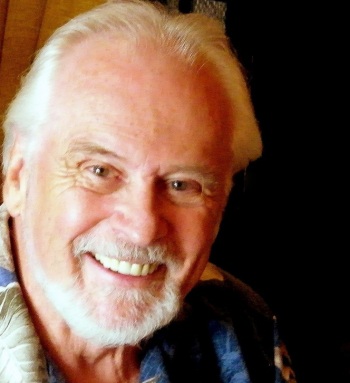
x
Numéro Cinq Contributing Editor Patrick J. Keane is Professor Emeritus of Le Moyne College. Though he has written on a wide range of topics, his areas of special interest have been 19th and 20th-century poetry in the Romantic tradition; Irish literature and history; the interactions of literature with philosophic, religious, and political thinking; the impact of Nietzsche on certain 20th century writers; and, most recently, Transatlantic studies, exploring the influence of German Idealist philosophy and British Romanticism on American writers. His books include William Butler Yeats: Contemporary Studies in Literature (1973), A Wild Civility: Interactions in the Poetry and Thought of Robert Graves (1980), Yeats’s Interactions with Tradition (1987), Terrible Beauty: Yeats, Joyce, Ireland and the Myth of the Devouring Female (1988), Coleridge’s Submerged Politics (1994), Emerson, Romanticism, and Intuitive Reason: The Transatlantic “Light of All Our Day” (2003), and Emily Dickinson’s Approving God: Divine Design and the Problem of Suffering (2008).
x
x
 Zombie – watercolor on paper, 24″ x 18″, 2015
Zombie – watercolor on paper, 24″ x 18″, 2015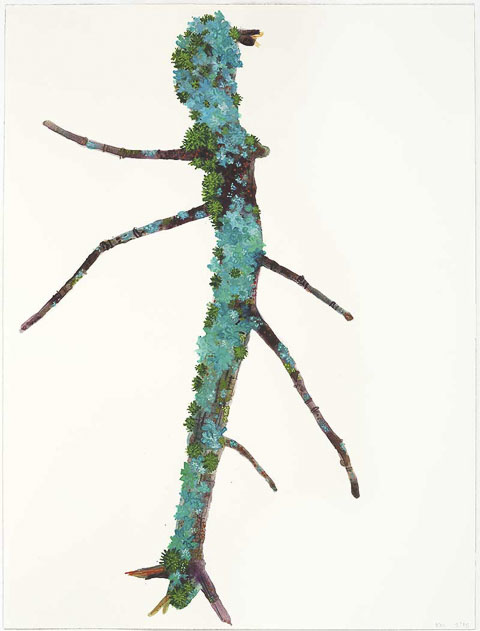 Dowser – watercolor on paper, 24″ x 18″, 2015
Dowser – watercolor on paper, 24″ x 18″, 2015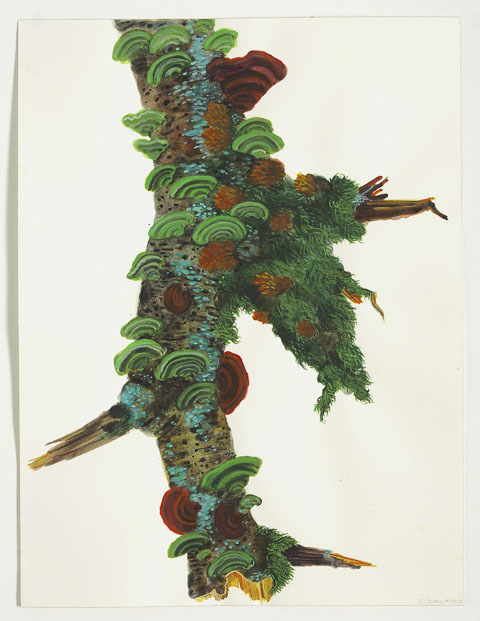 For Fortuny – watercolor on paper, 24″ x 18″, 2015
For Fortuny – watercolor on paper, 24″ x 18″, 2015 La De Da – watercolor on paper, 50″x 40″, 2016
La De Da – watercolor on paper, 50″x 40″, 2016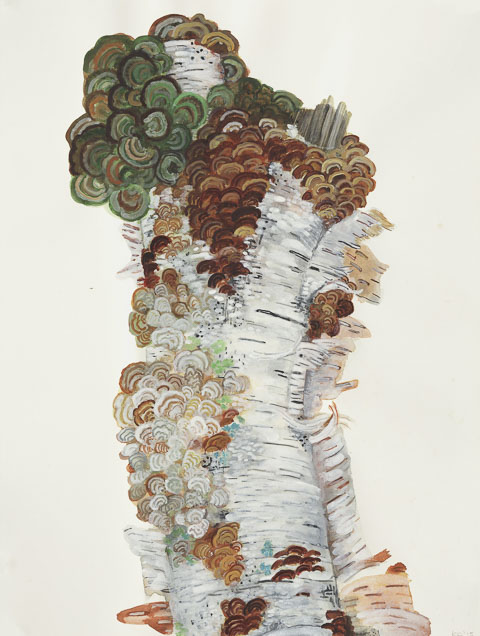 White Birch – watercolor on paper, 24″ x 18″, 2015
White Birch – watercolor on paper, 24″ x 18″, 2015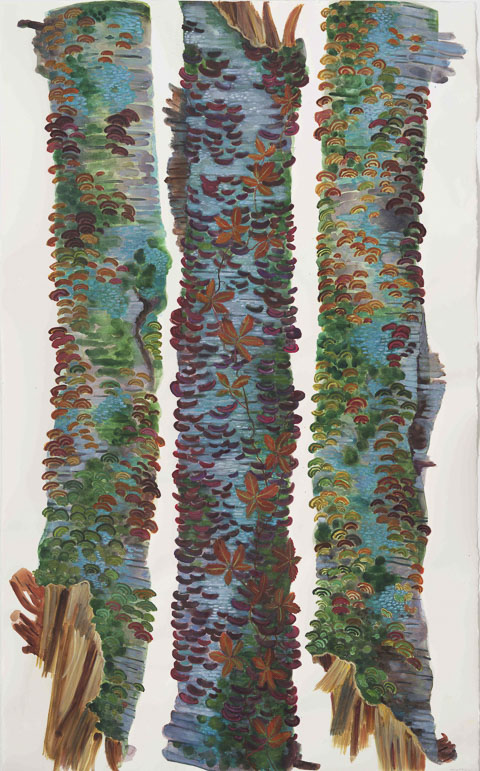 Menage A Trois – watercolor on paper, 7′ x 4′, 2016
Menage A Trois – watercolor on paper, 7′ x 4′, 2016 Showtime – watercolor on paper, 7′ x 3 1/2′, 2017
Showtime – watercolor on paper, 7′ x 3 1/2′, 2017 Showtime II – watercolor on paper, 5′ x 3 1/2′ , 2017
Showtime II – watercolor on paper, 5′ x 3 1/2′ , 2017 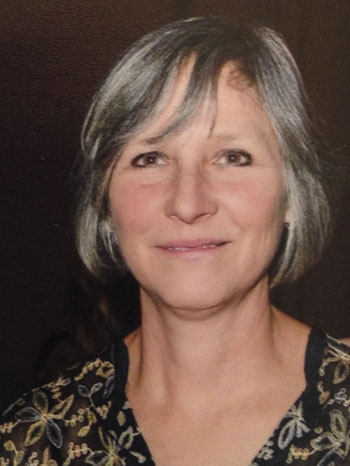
 Photo by Jada Lillo
Photo by Jada Lillo



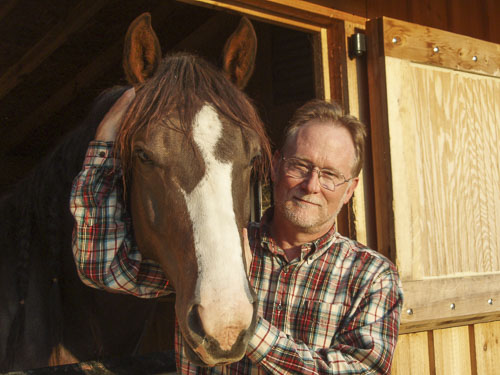
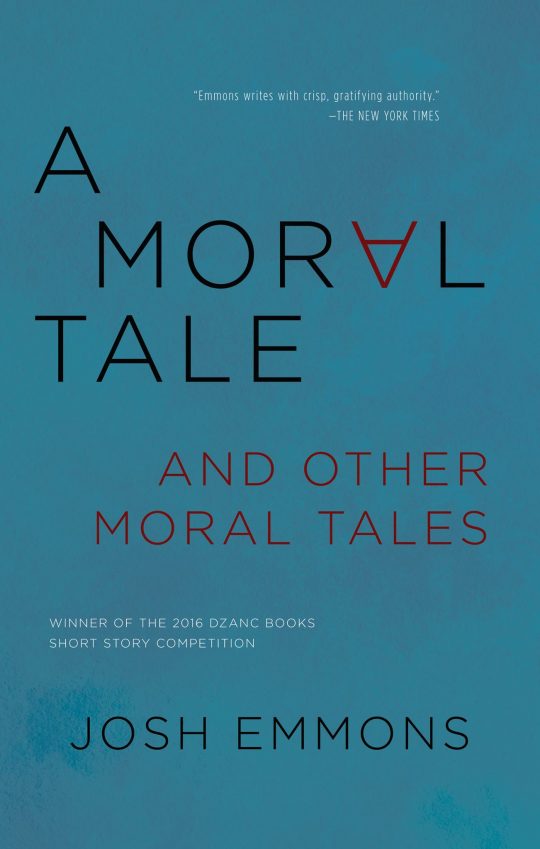


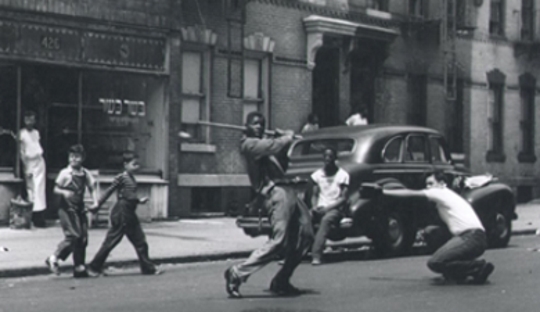


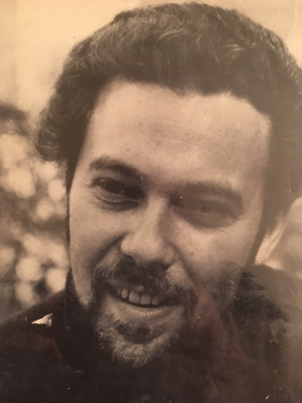





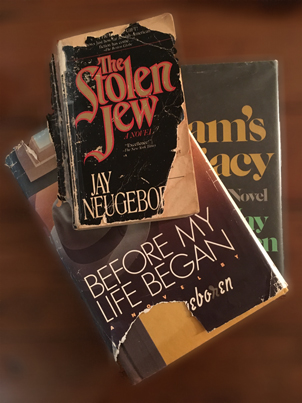

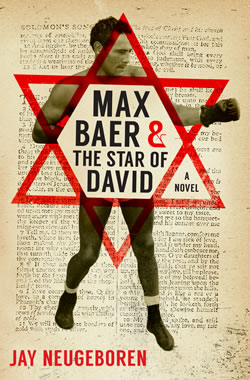


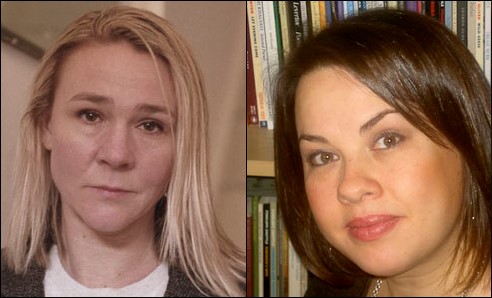 Miranda Boulton (The Painter)
Miranda Boulton (The Painter)



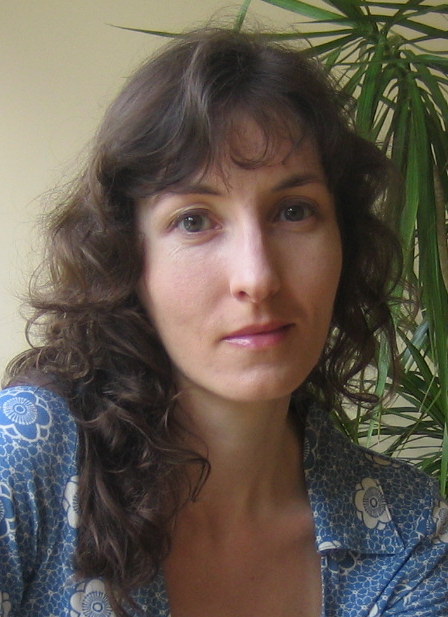



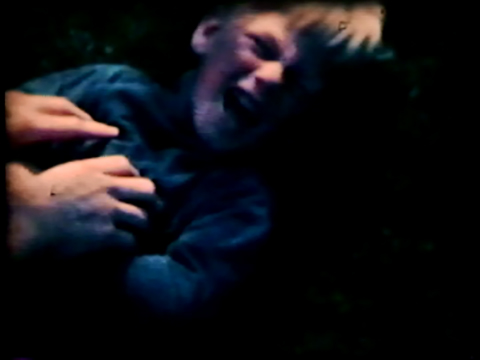





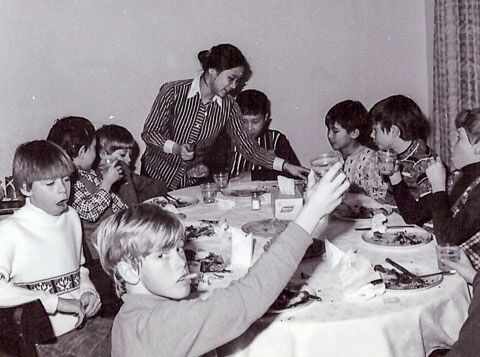

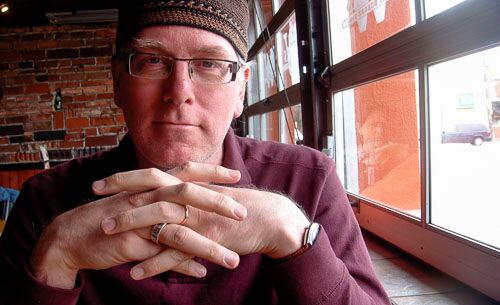







































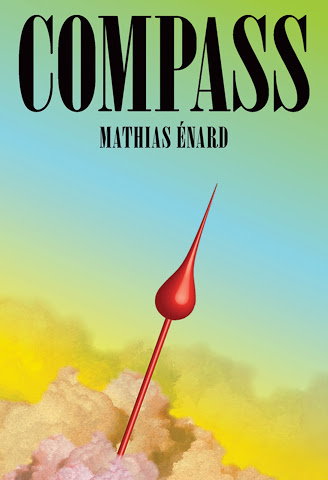
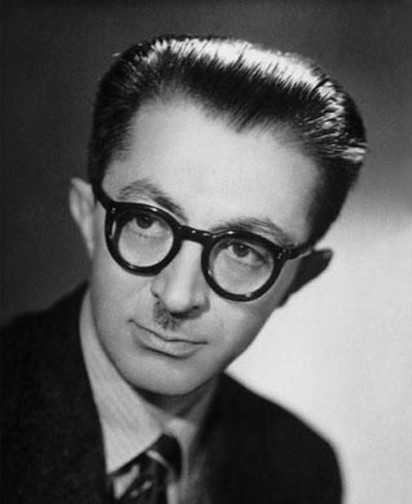















 Yeats by George Charles Beresford, 1911
Yeats by George Charles Beresford, 1911 Yeats’s Rose Cross, Order of the Golden Dawn, photo © National Library of Ireland
Yeats’s Rose Cross, Order of the Golden Dawn, photo © National Library of Ireland Madame Blavatsky, photo taken between 1886 and 1888
Madame Blavatsky, photo taken between 1886 and 1888 Yeats’s Gyre
Yeats’s Gyre Maud Gonne in Cathleen Ni Houlihan
Maud Gonne in Cathleen Ni Houlihan Title page of Summum Bonum by Rosicrucian apologist Robert Fludd, 1629
Title page of Summum Bonum by Rosicrucian apologist Robert Fludd, 1629 Yeats later in life
Yeats later in life William Blake’s Nebuchadnezzar
William Blake’s Nebuchadnezzar Leda and the Swan by Jerzy Hulewicz, 1928
Leda and the Swan by Jerzy Hulewicz, 1928 Spinning room in a New England cotton mill, 1916, photo courtesy National Archives
Spinning room in a New England cotton mill, 1916, photo courtesy National Archives Archaeologist Henry Layard’s image of Nineveh
Archaeologist Henry Layard’s image of Nineveh Winding stair in Thoor Ballylee tower, photo by Walt Hunter via
Winding stair in Thoor Ballylee tower, photo by Walt Hunter via  Maud Gonne
Maud Gonne Maud Gonne
Maud Gonne Yeats and his wife Georgie, late 1920s
Yeats and his wife Georgie, late 1920s


 Cuchulain’s death, illustration by Stephen Reid, 1904
Cuchulain’s death, illustration by Stephen Reid, 1904 Bhutanese thanka of Mount Meru and the Buddhist universe, 19th century
Bhutanese thanka of Mount Meru and the Buddhist universe, 19th century

